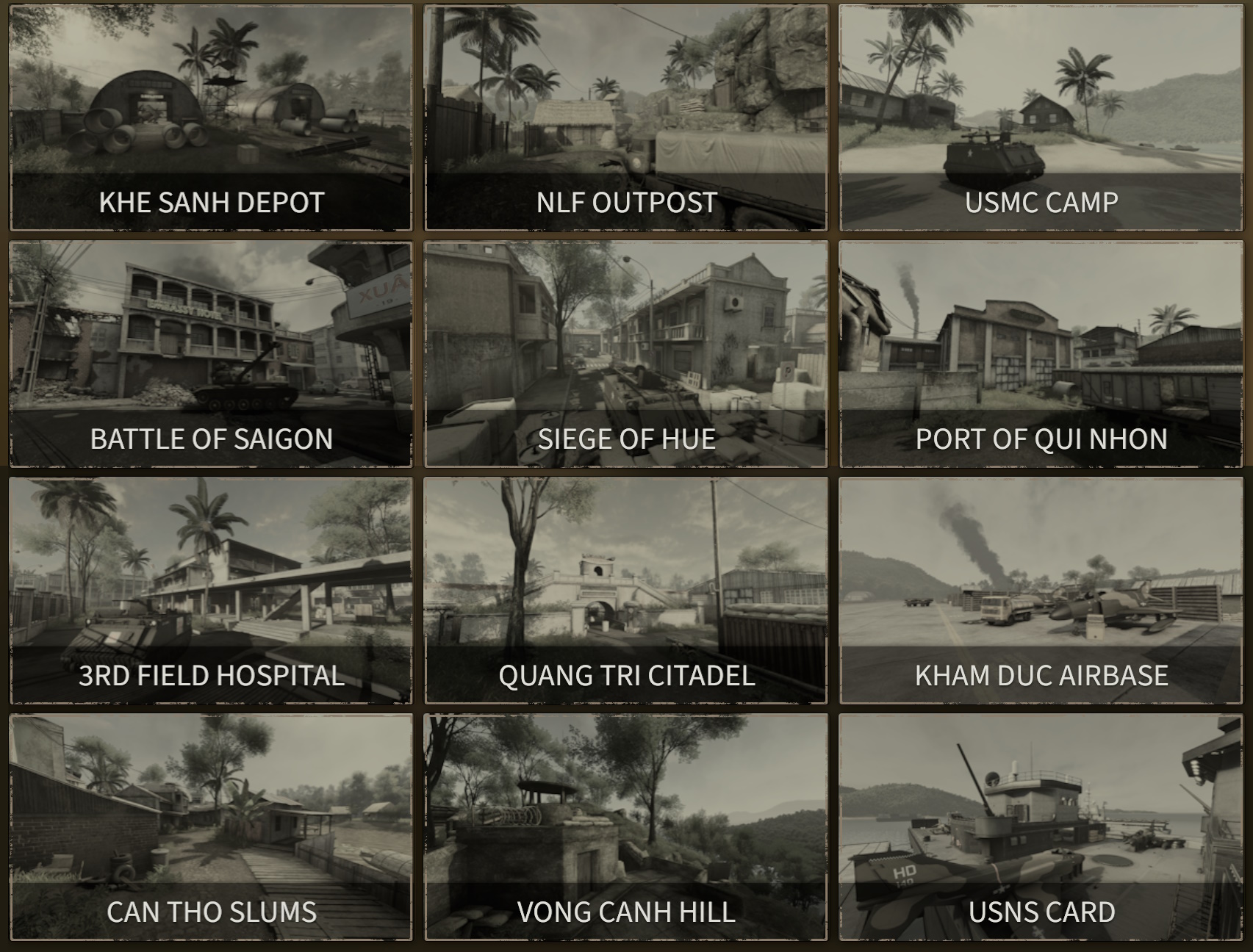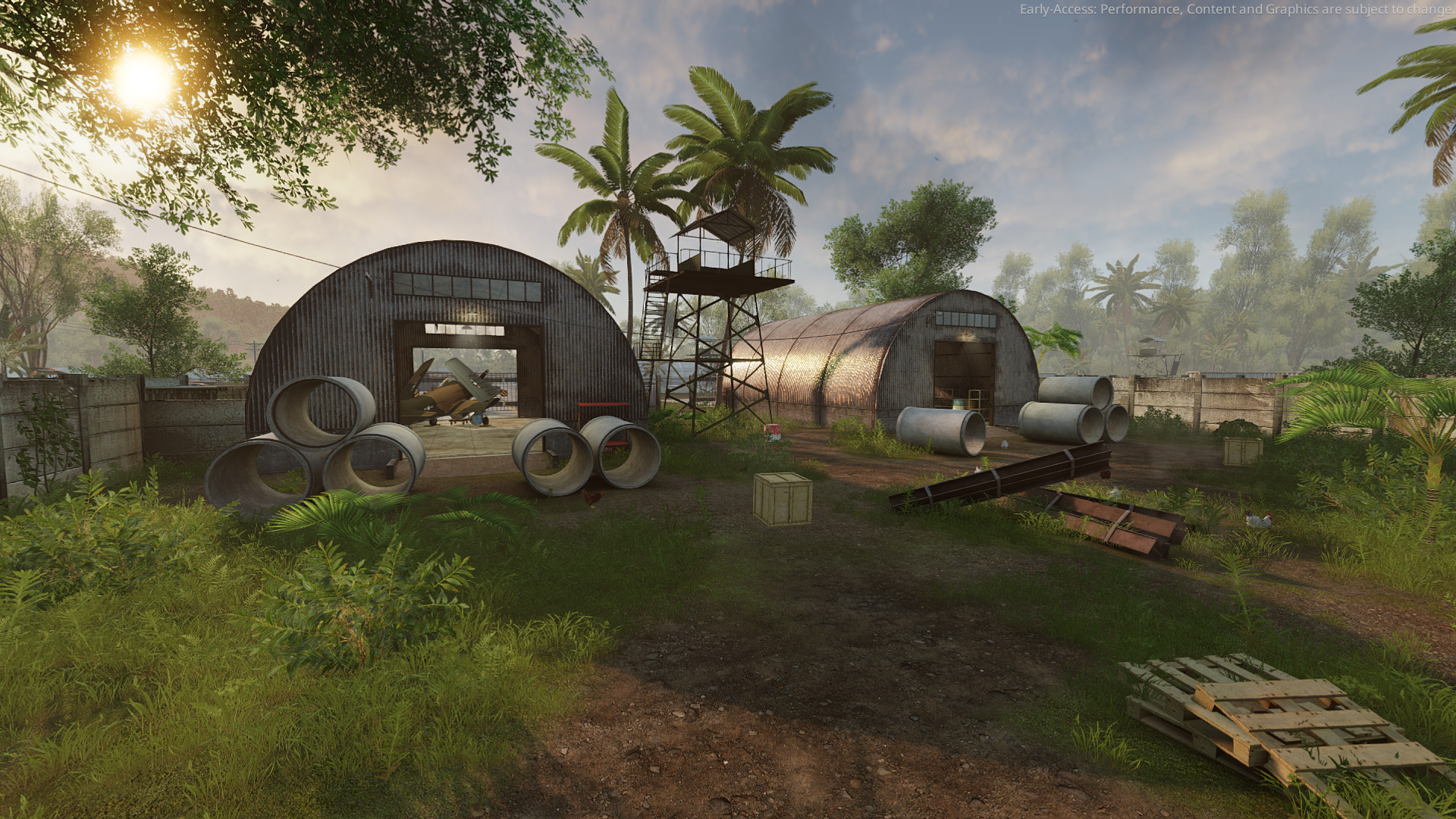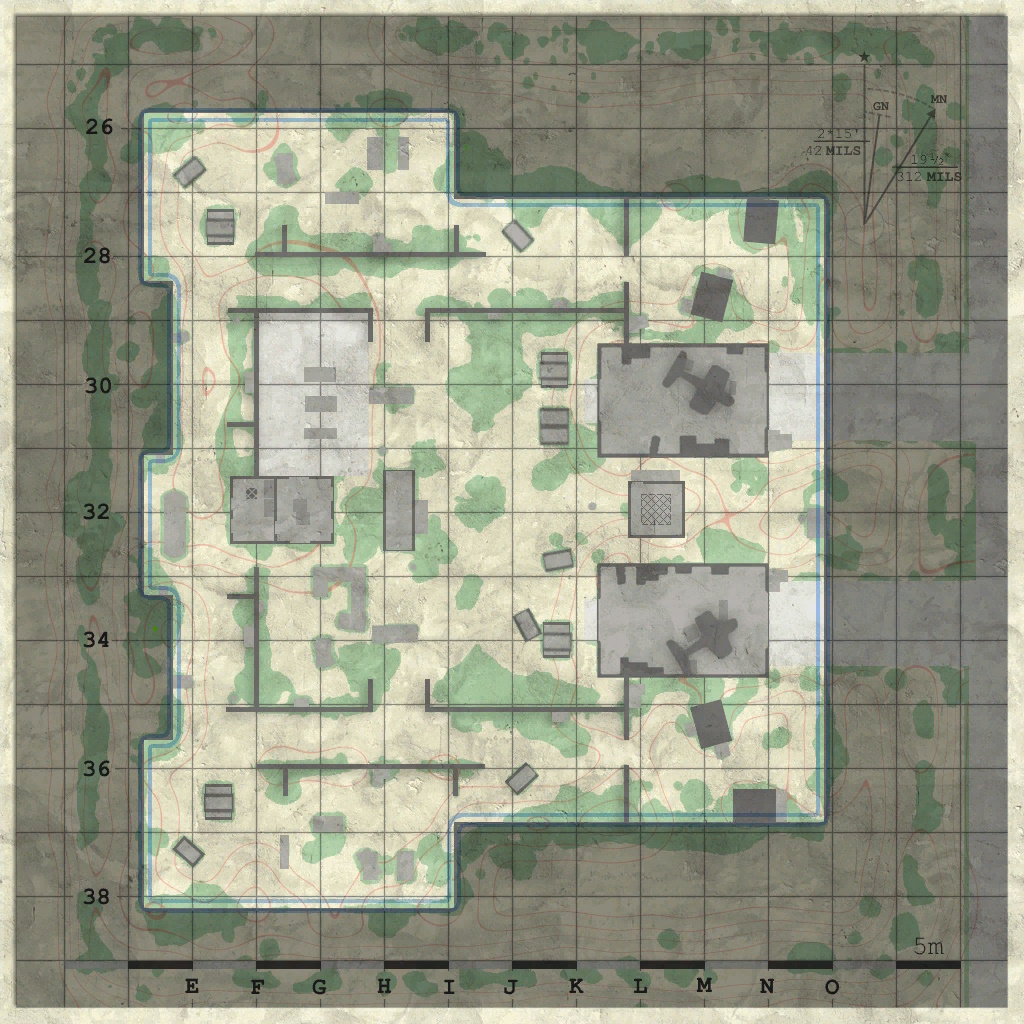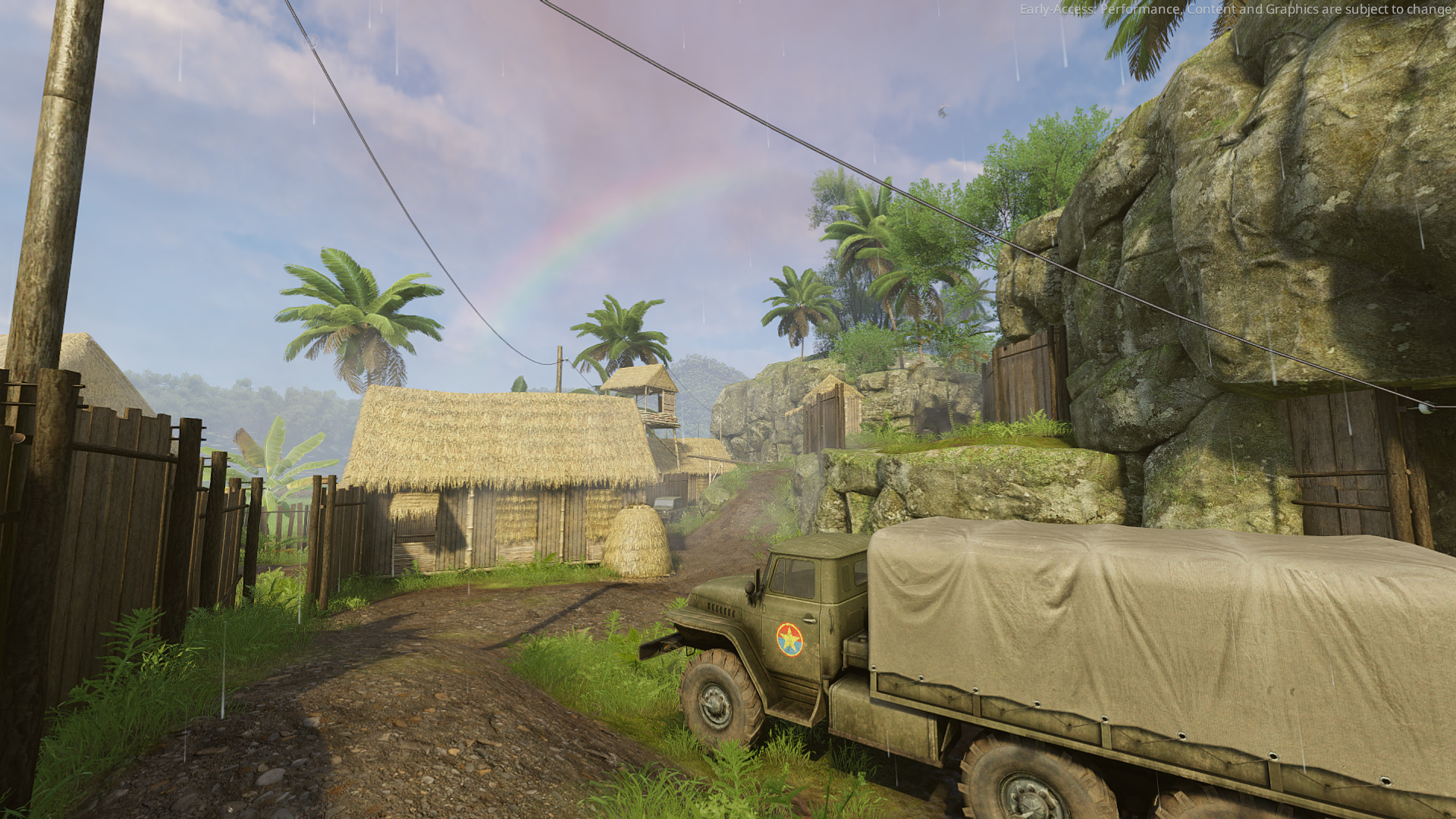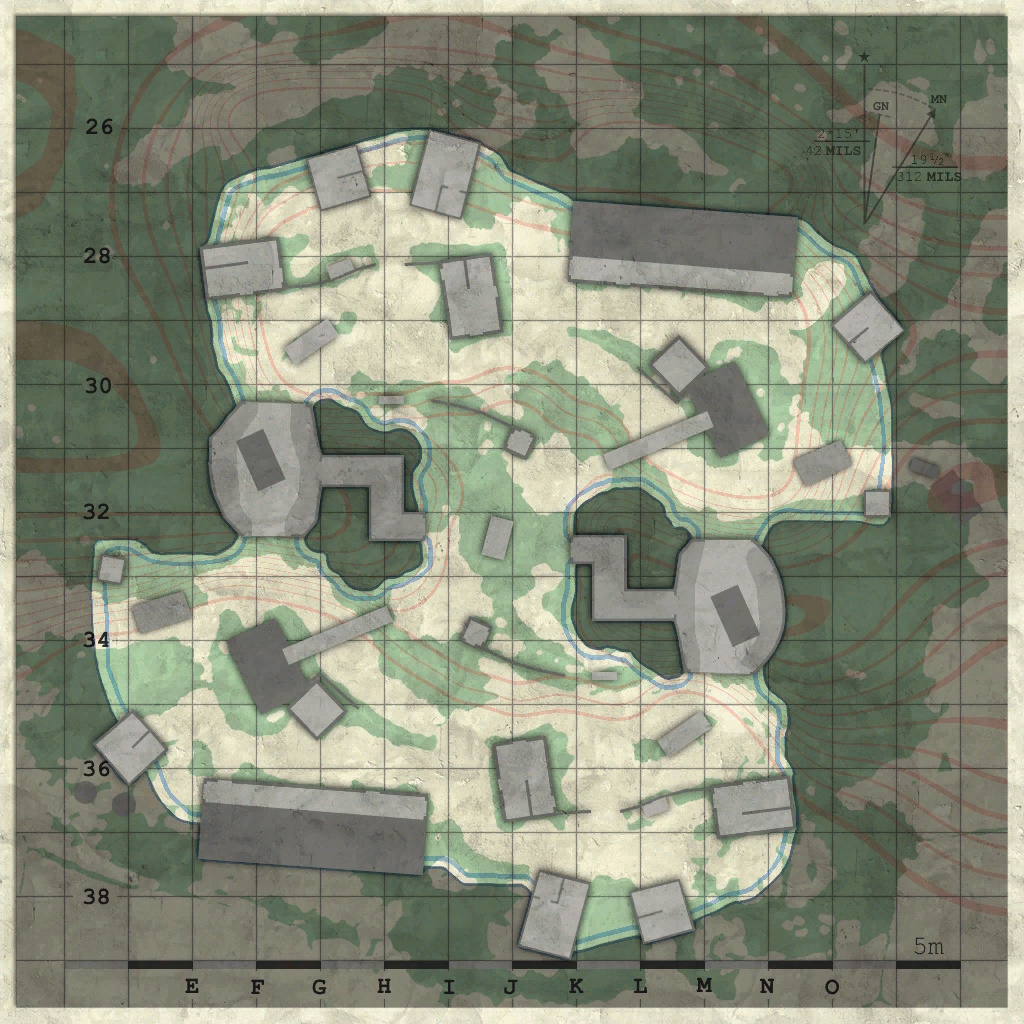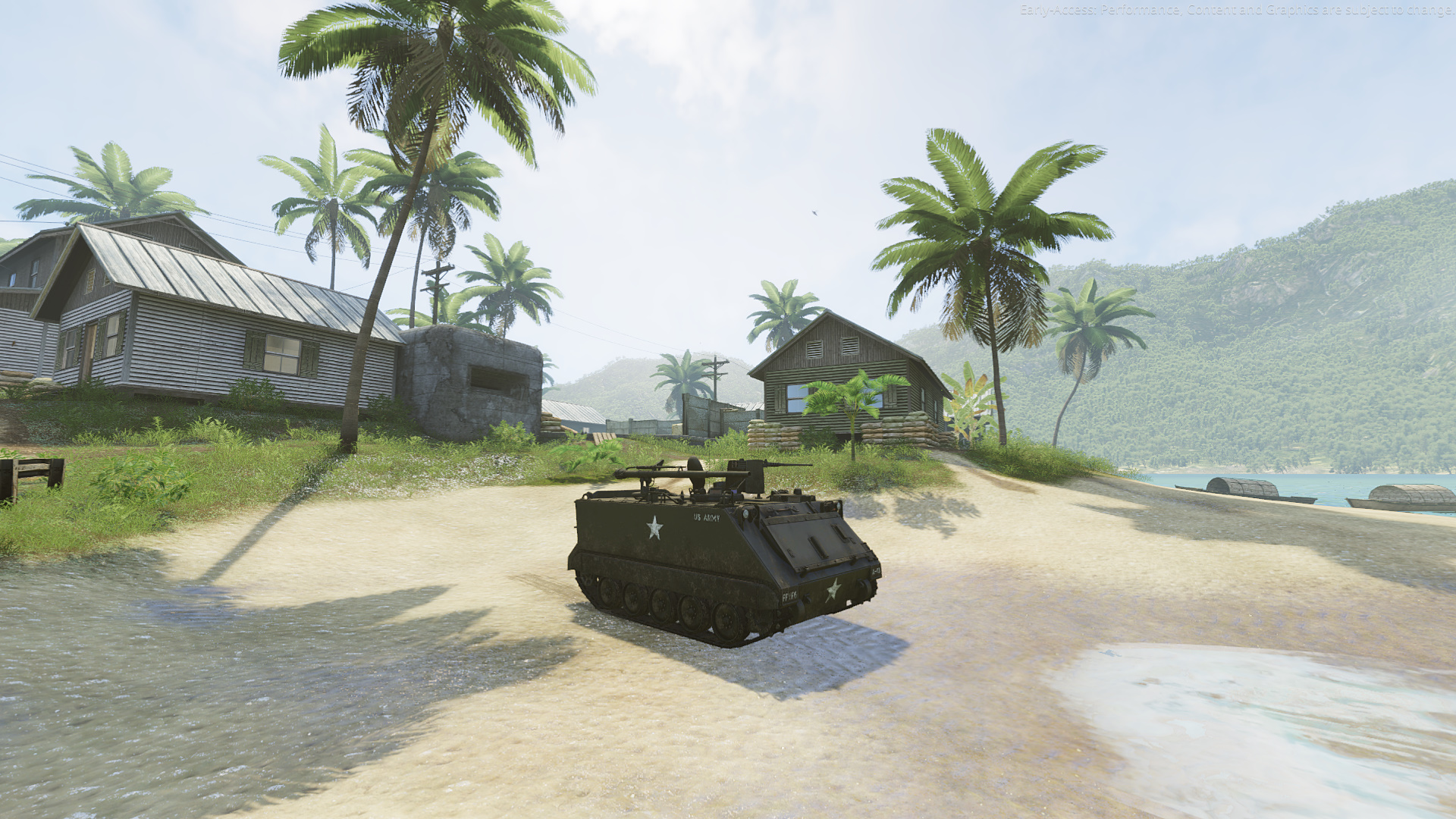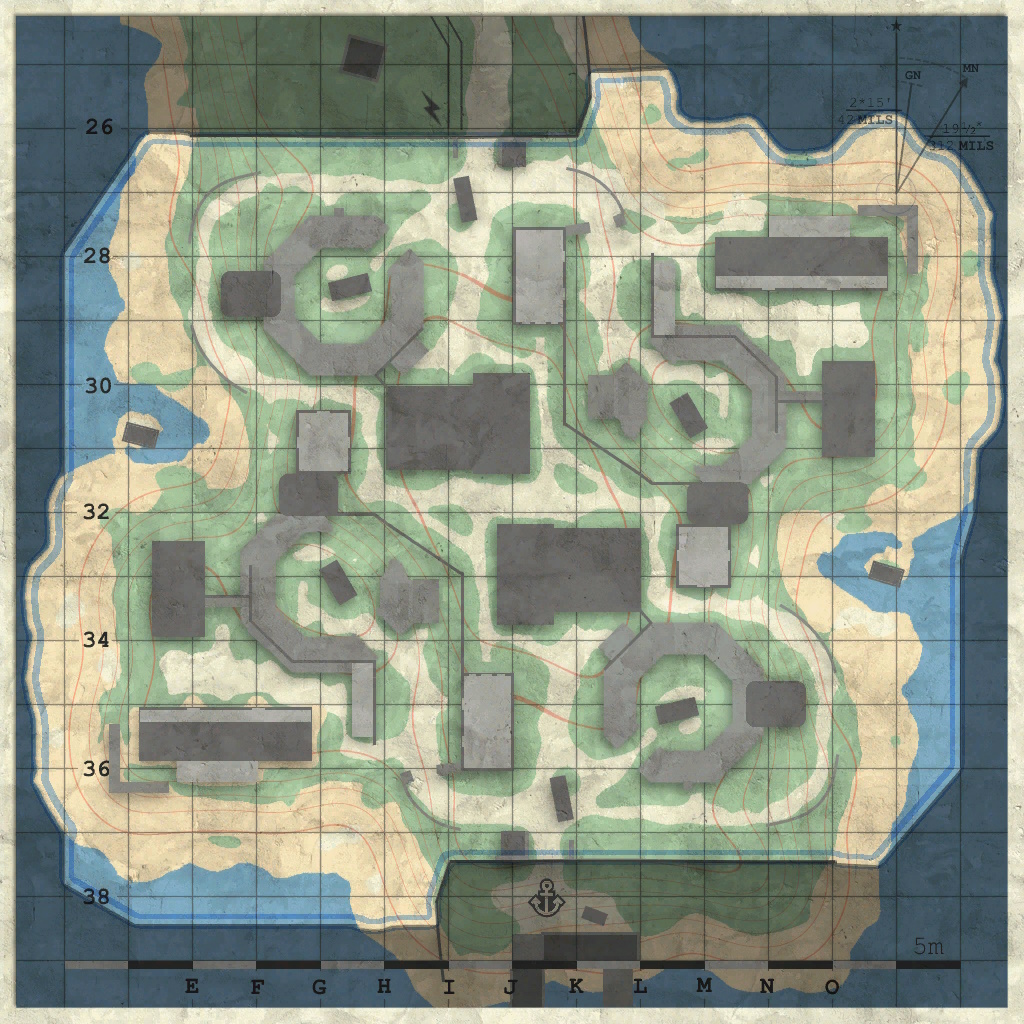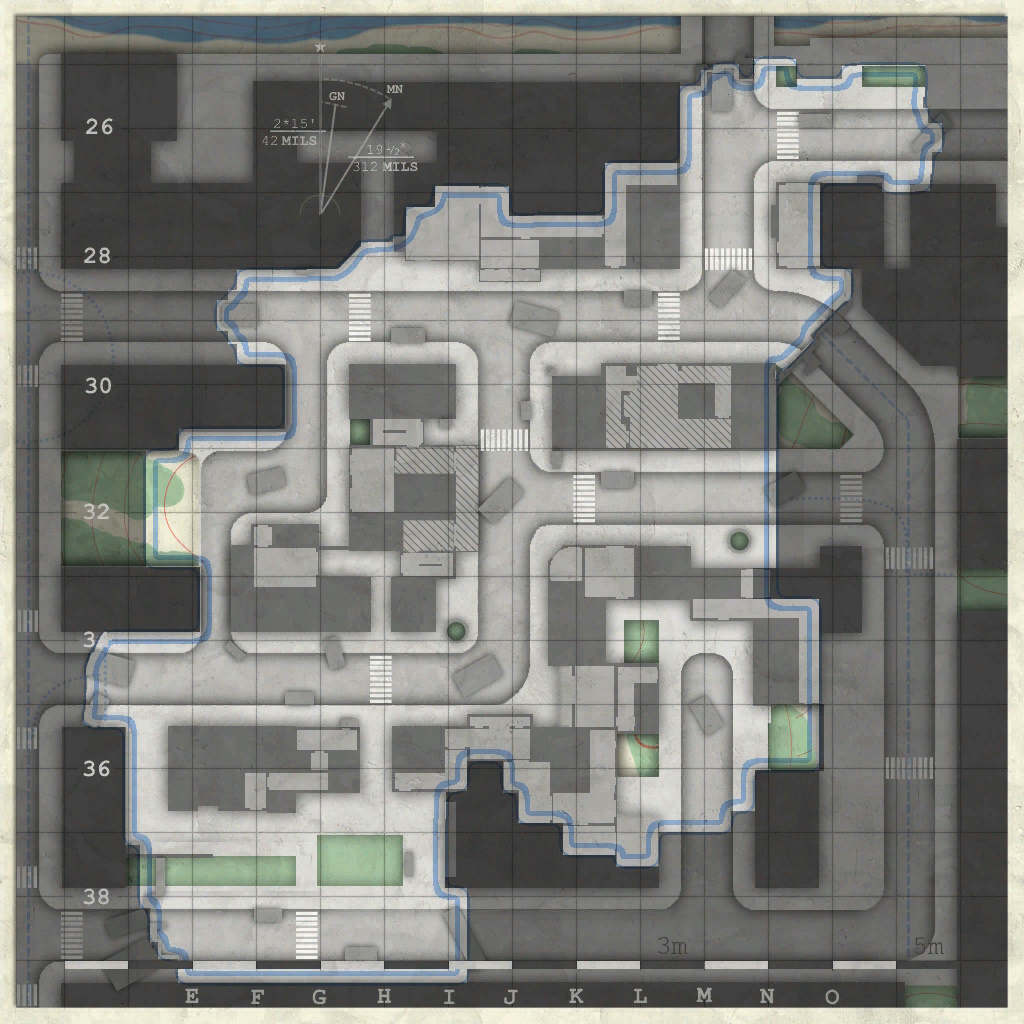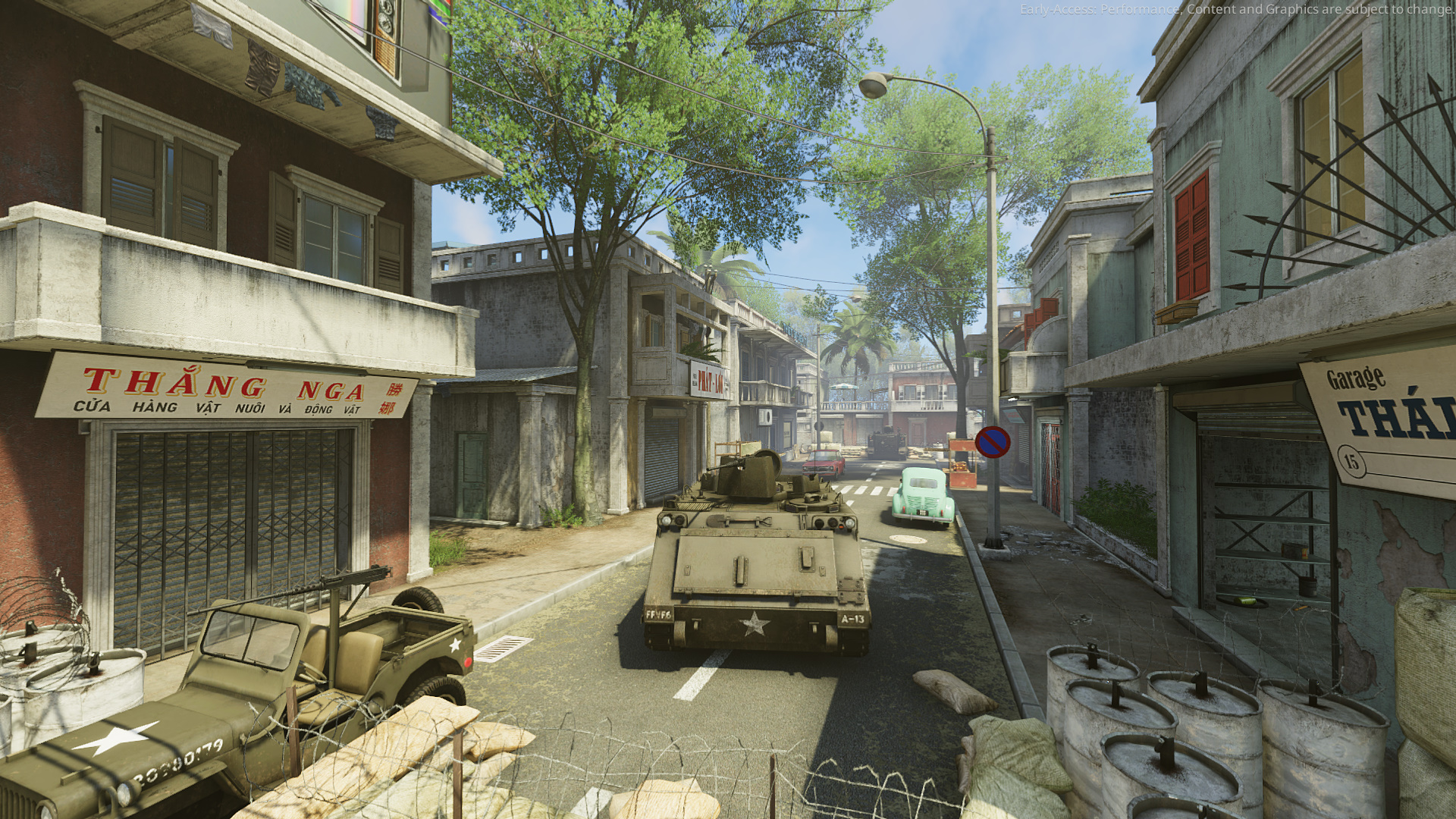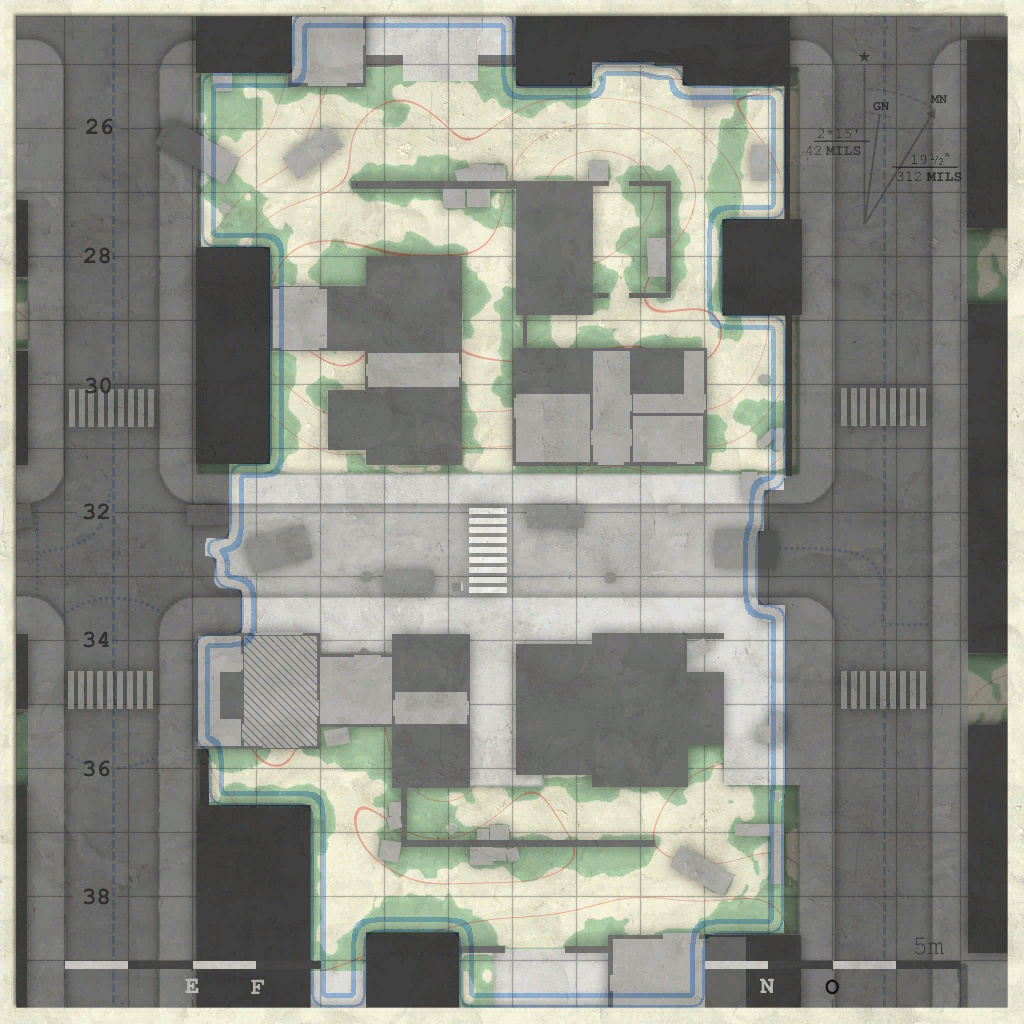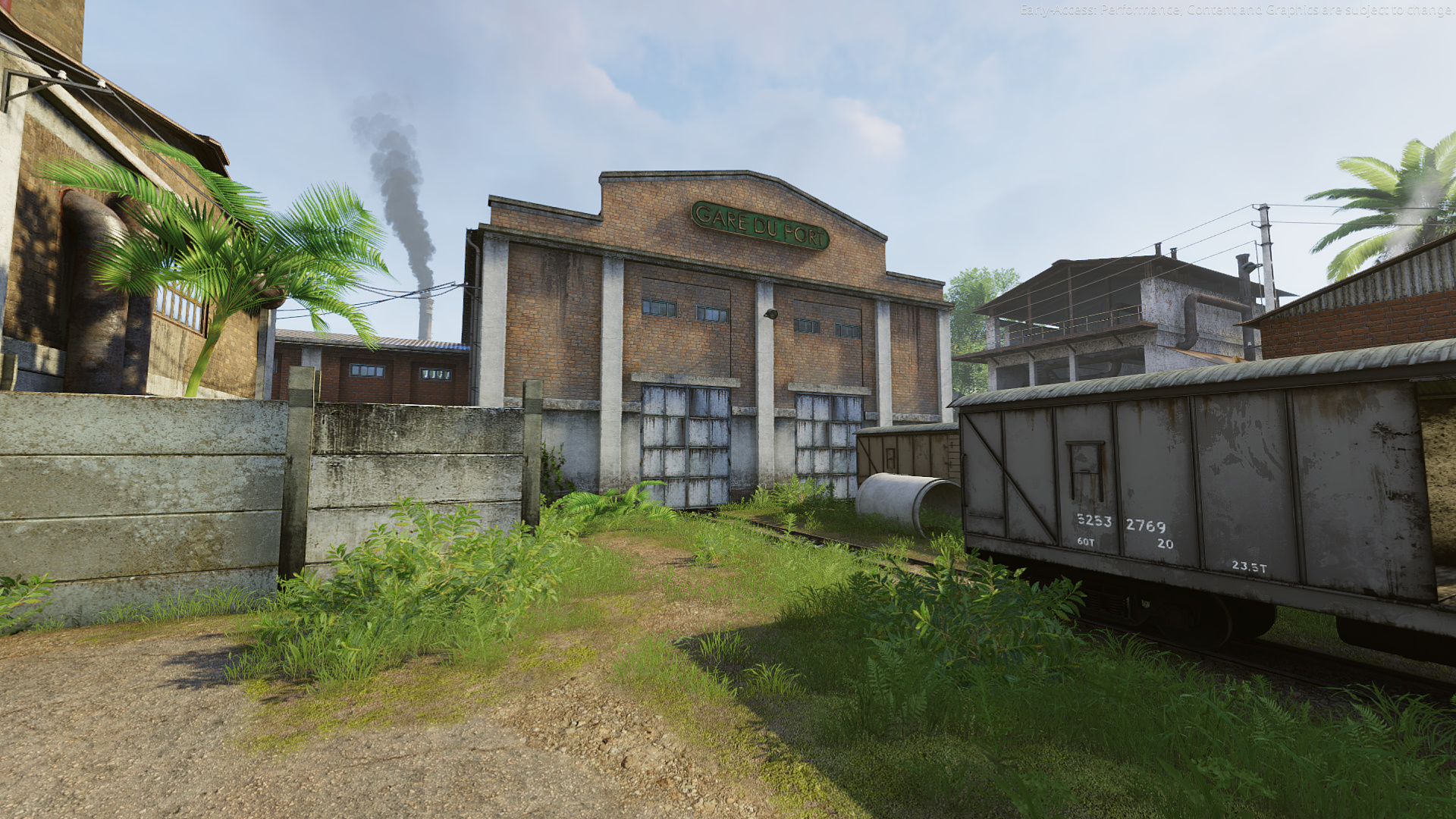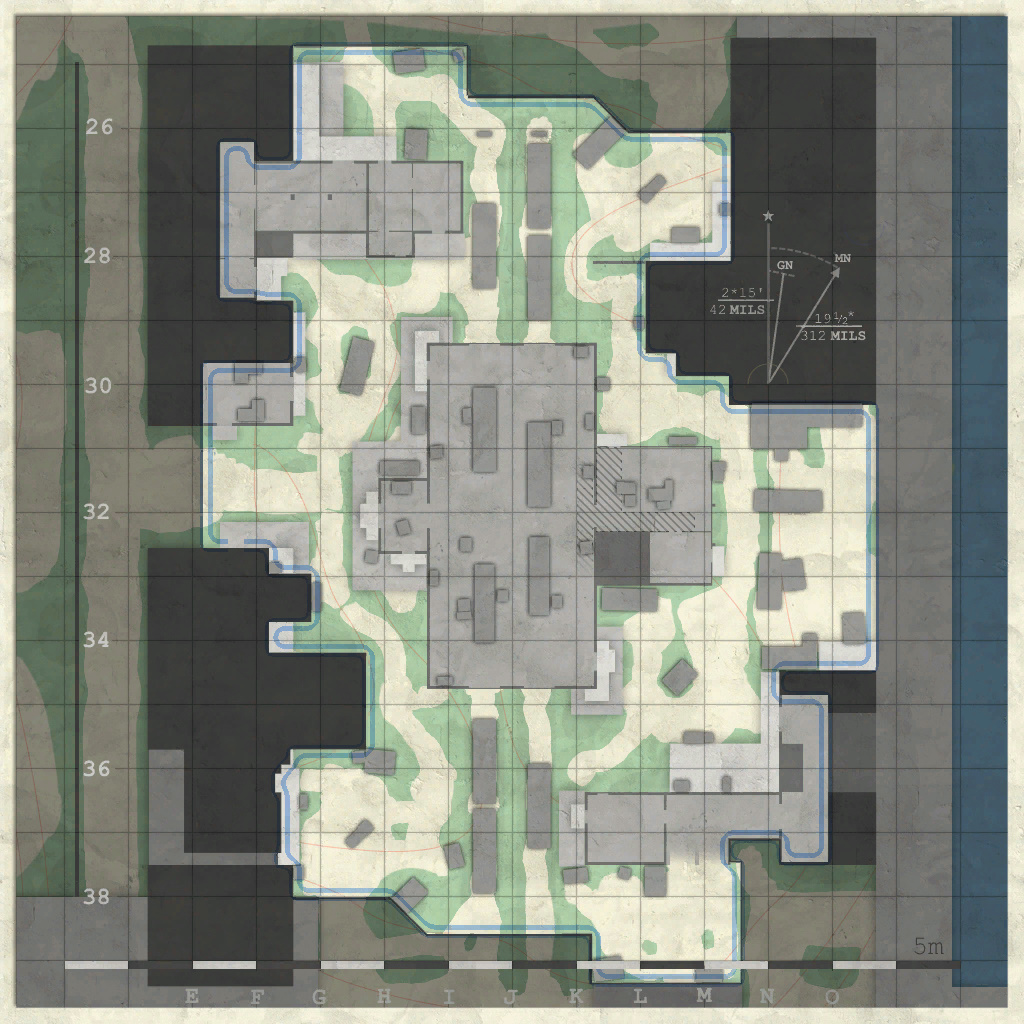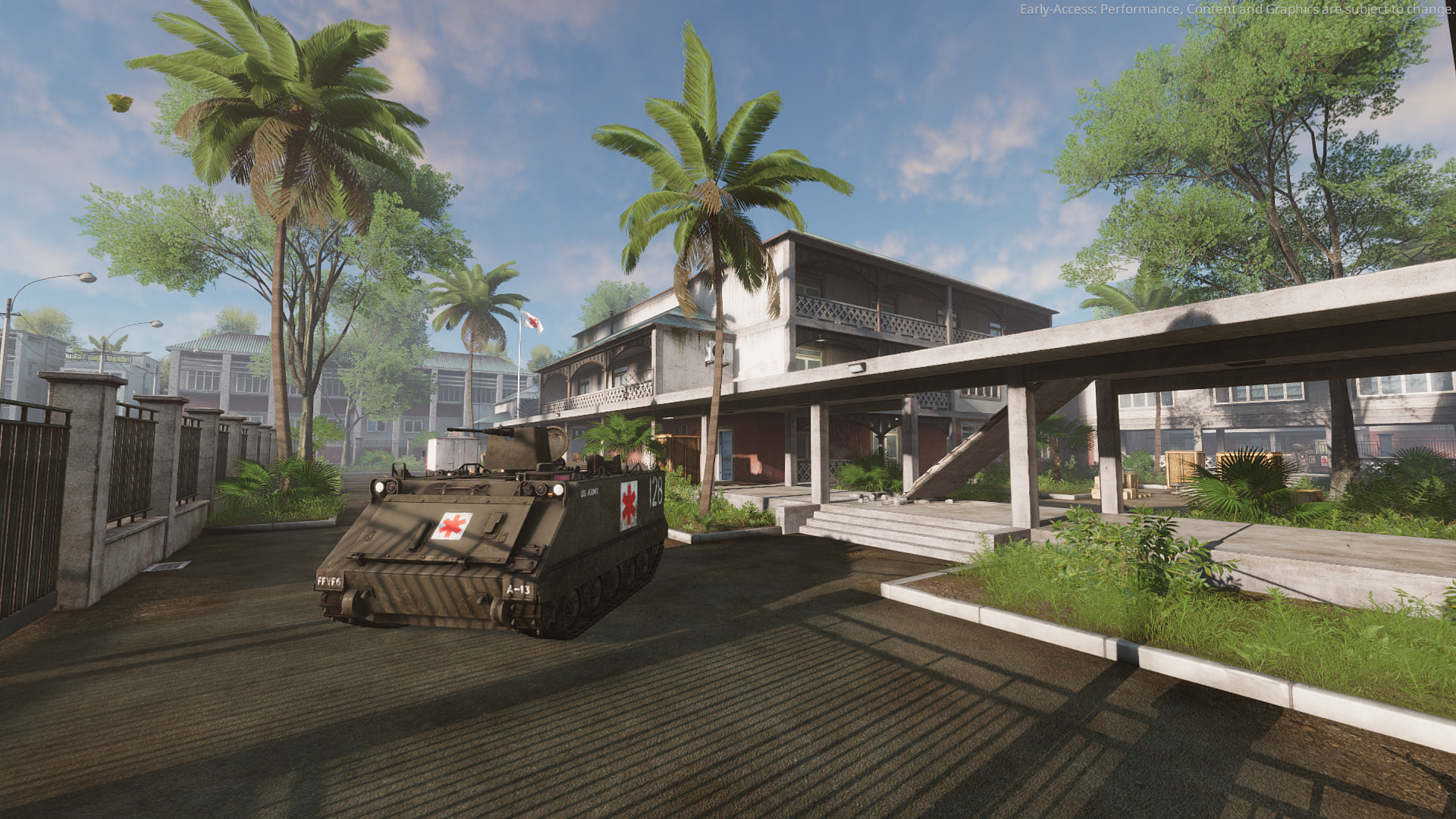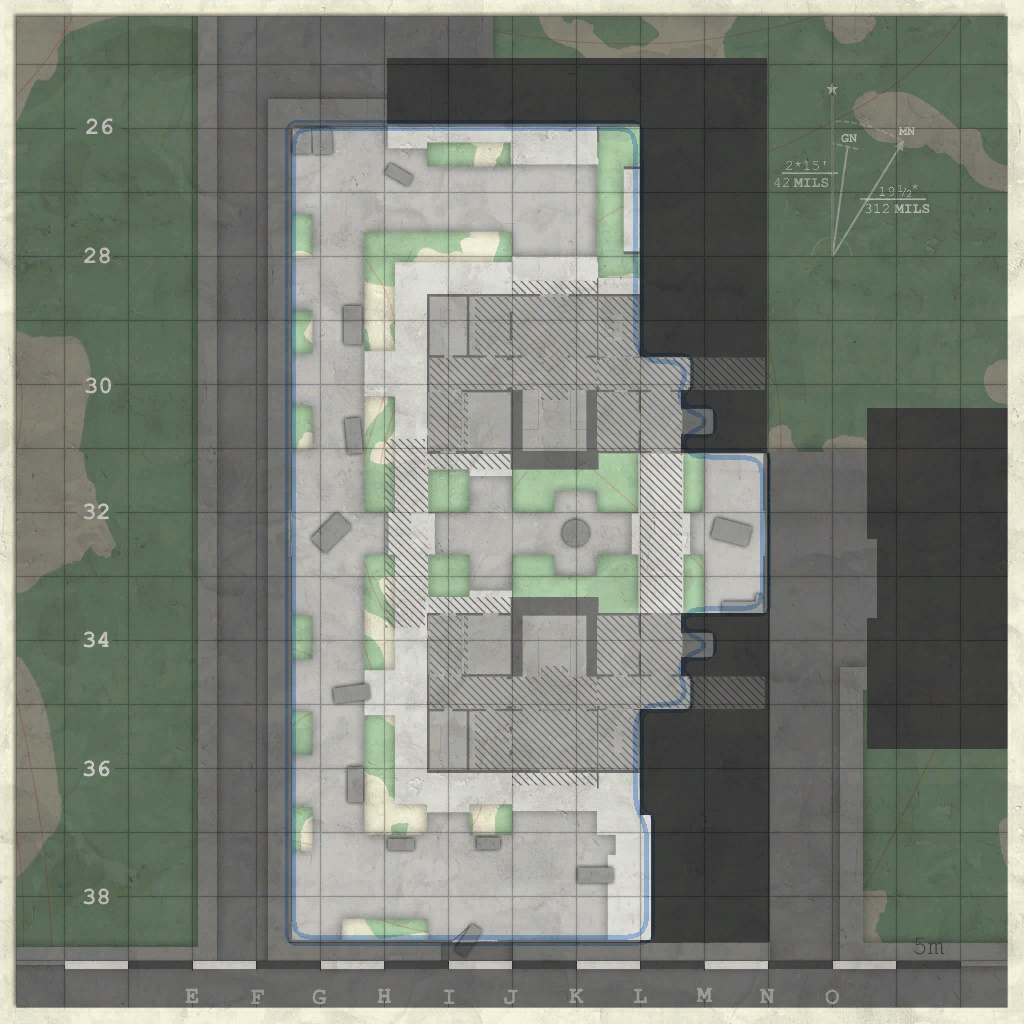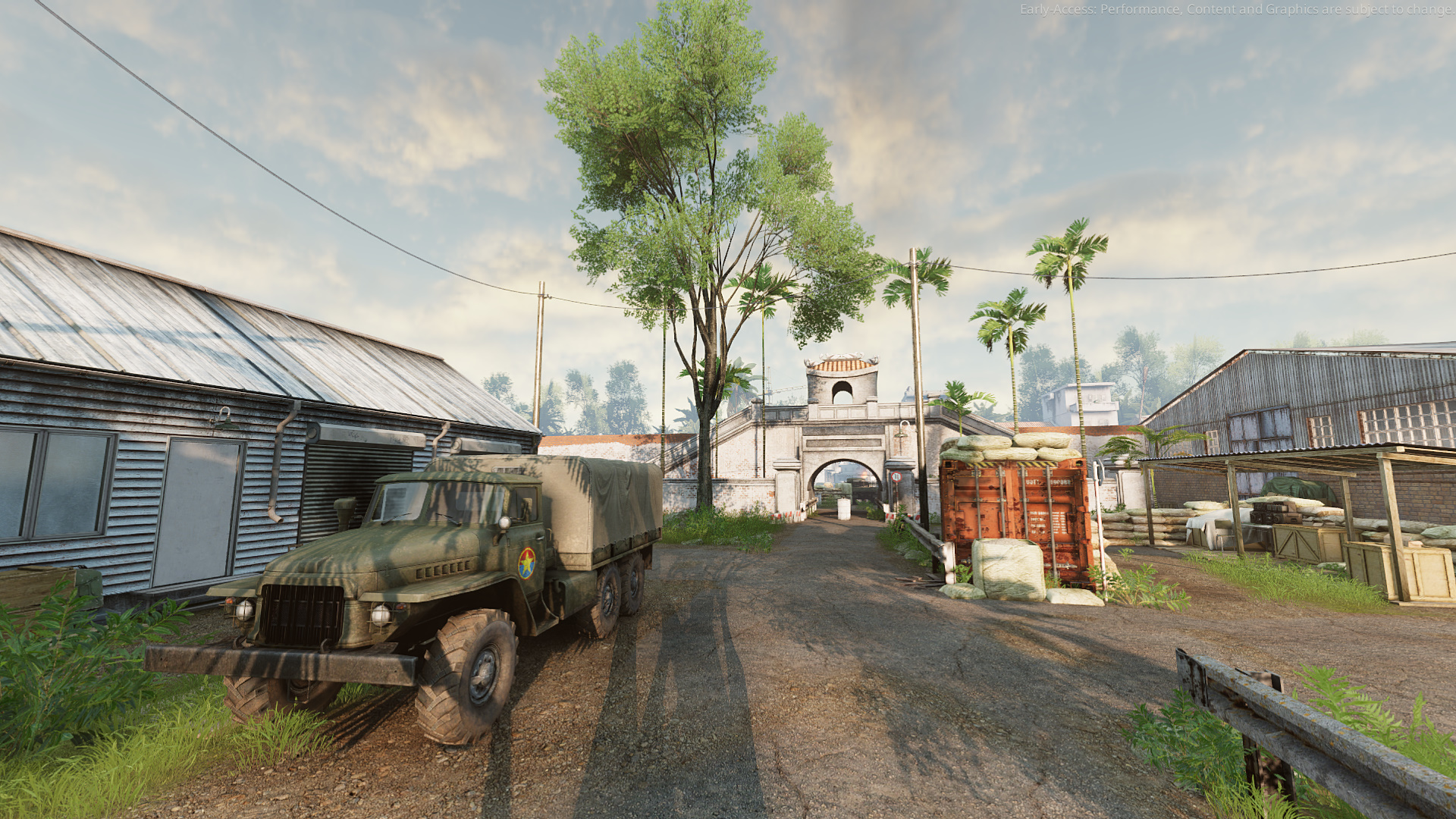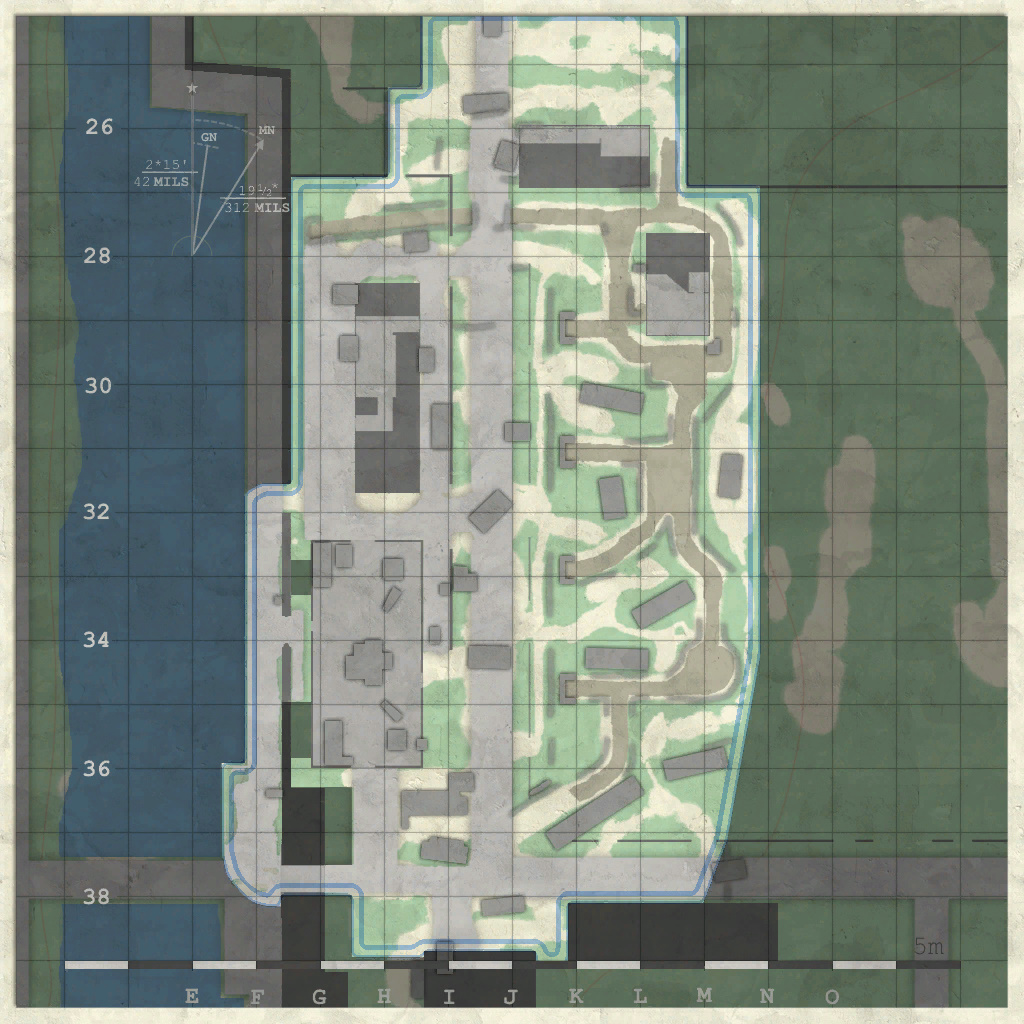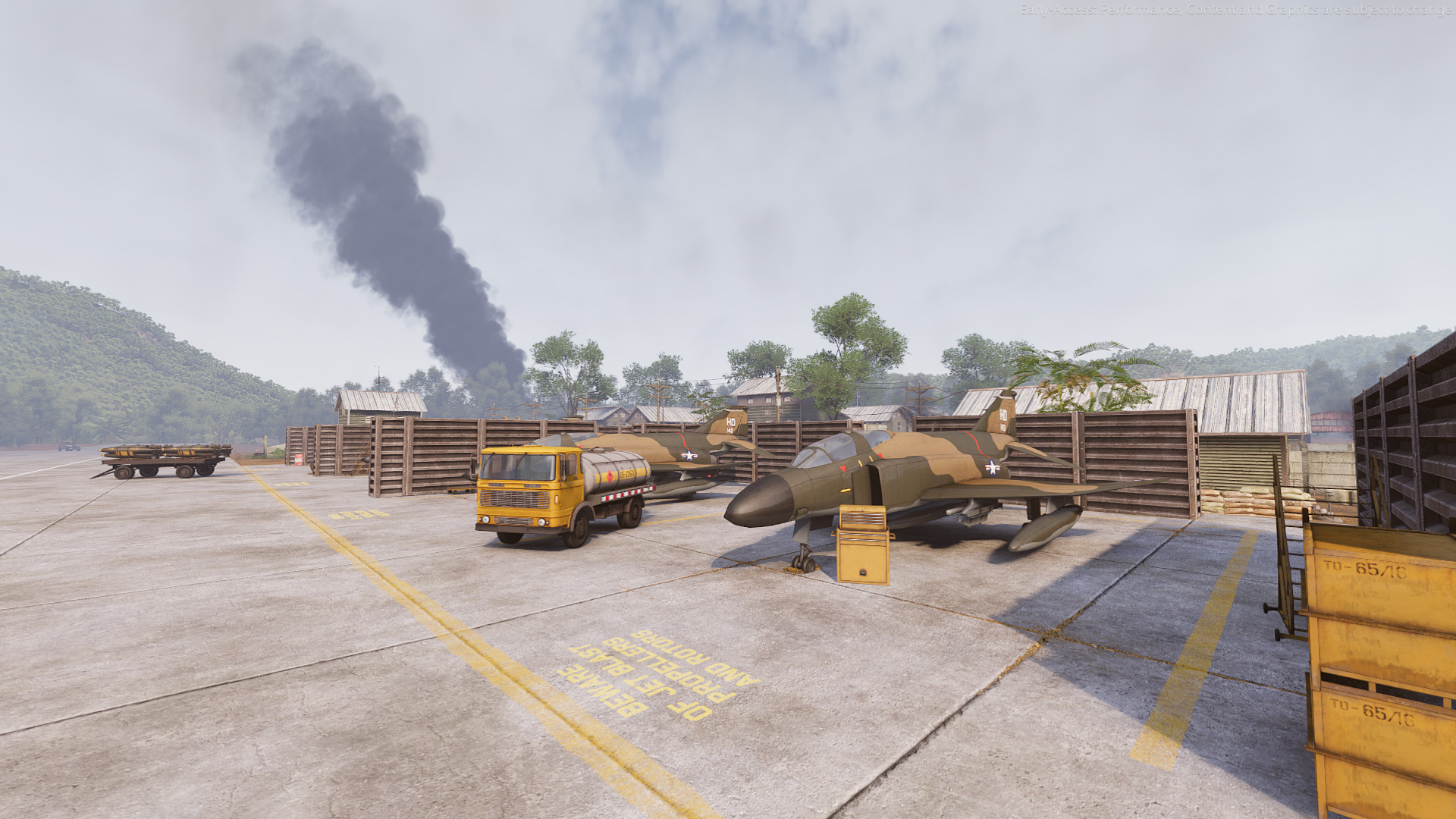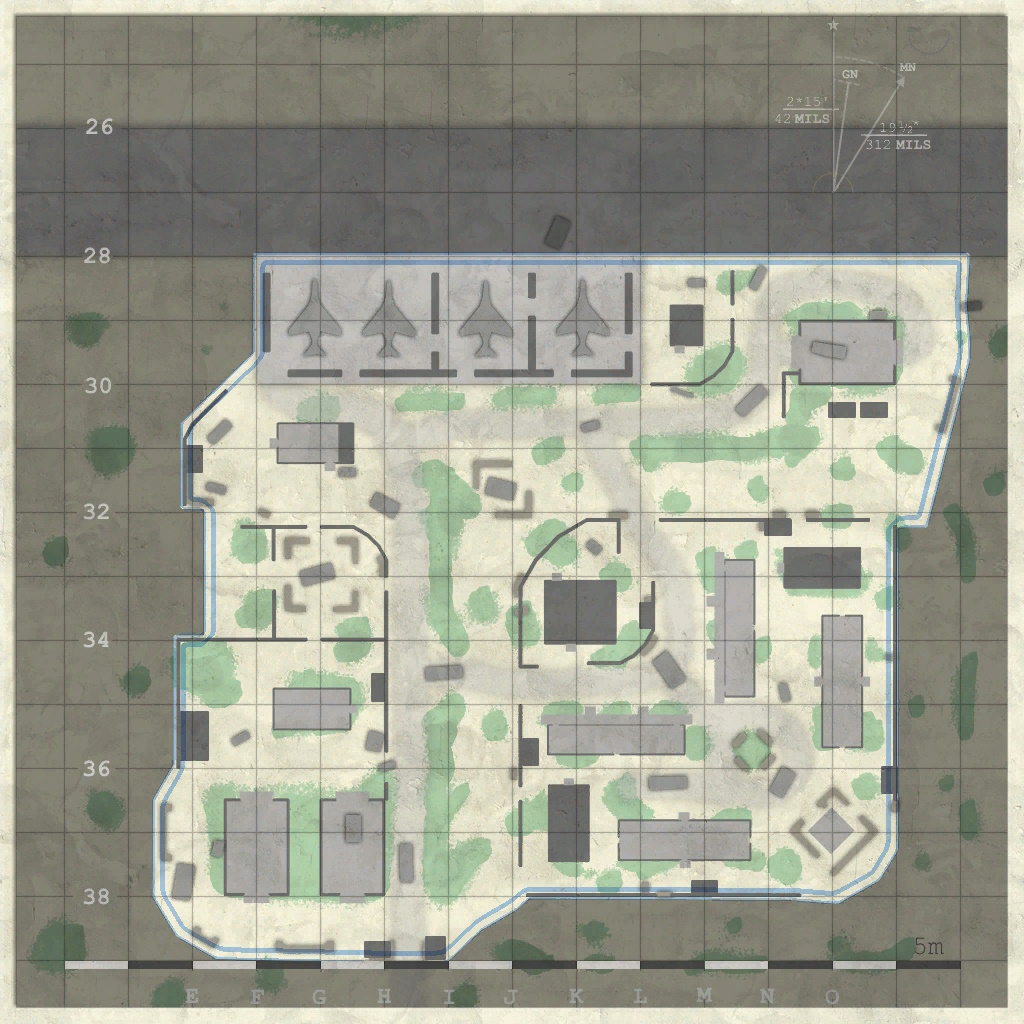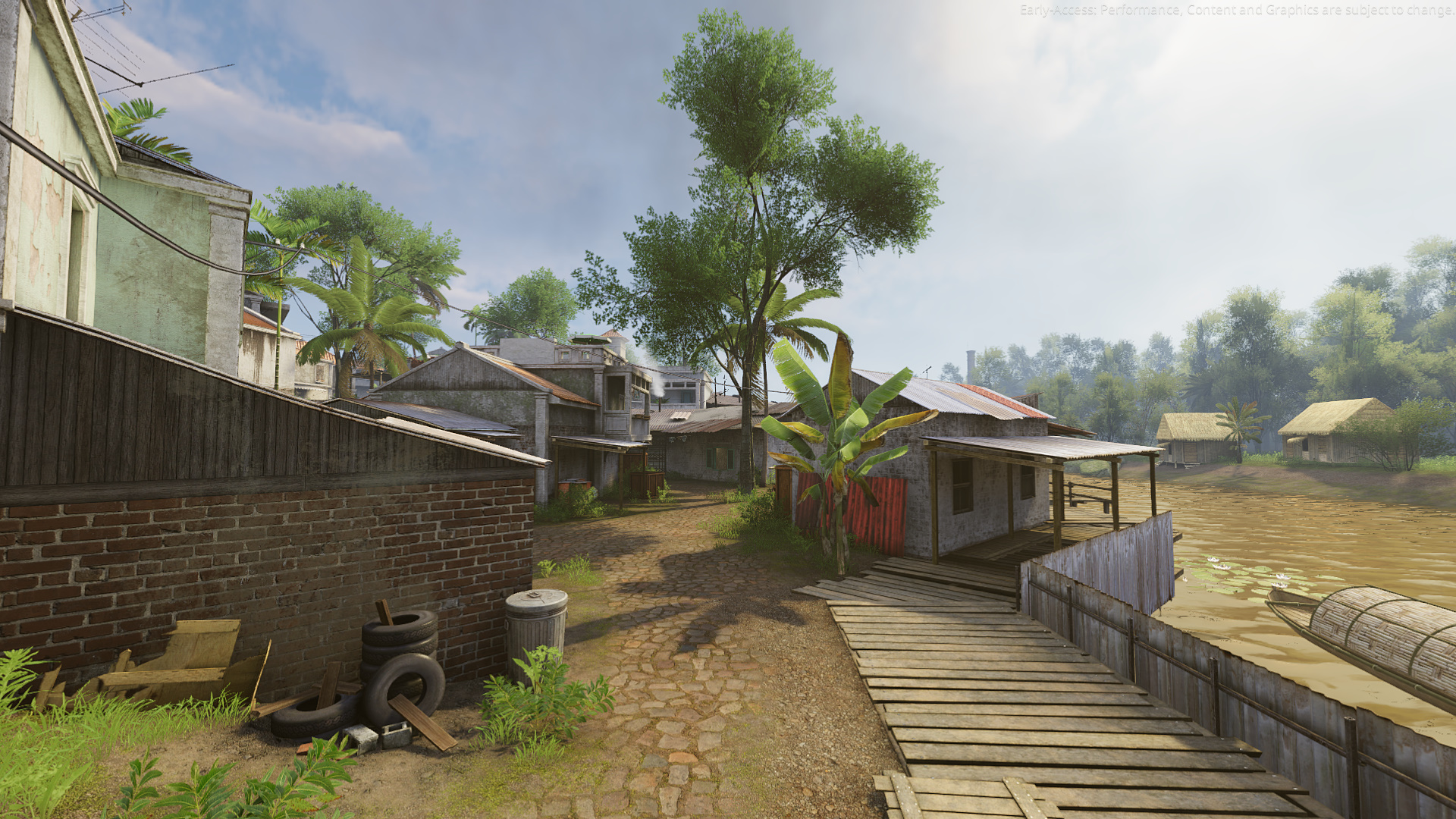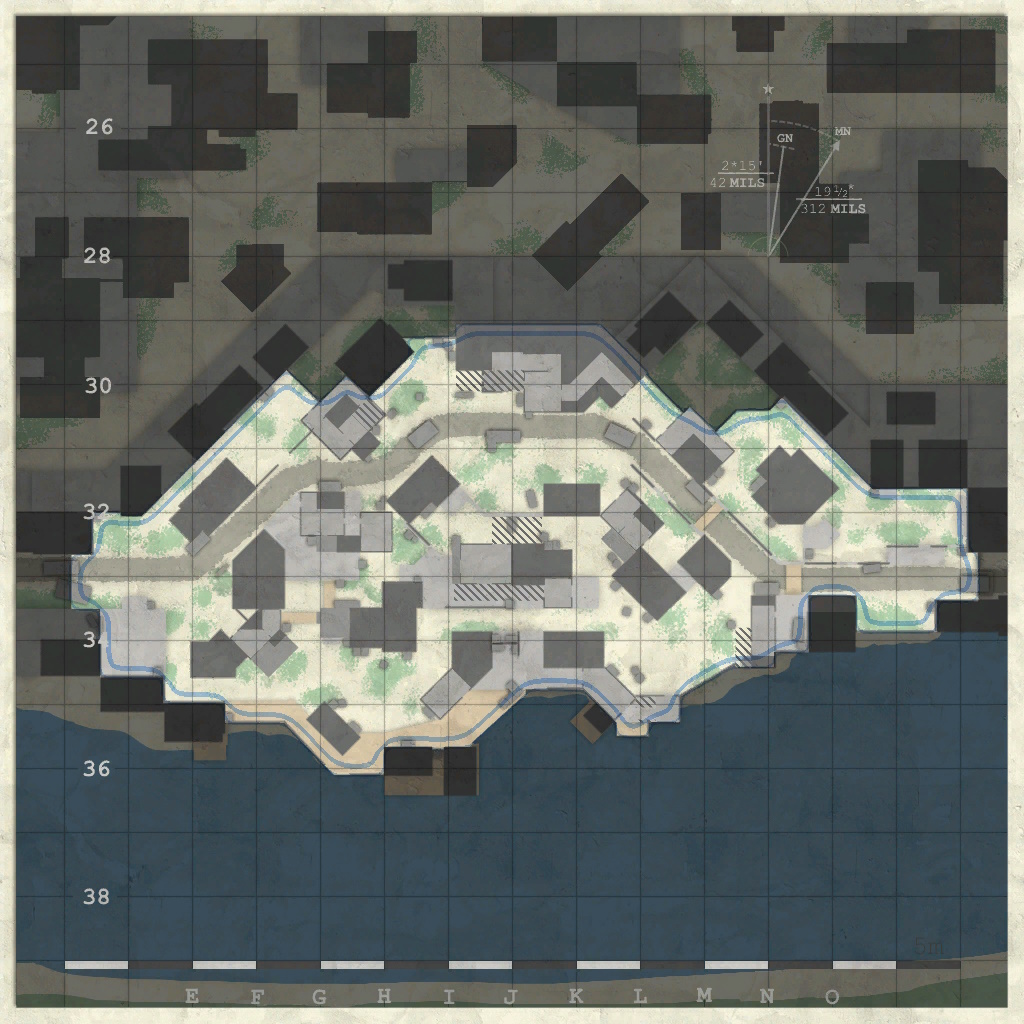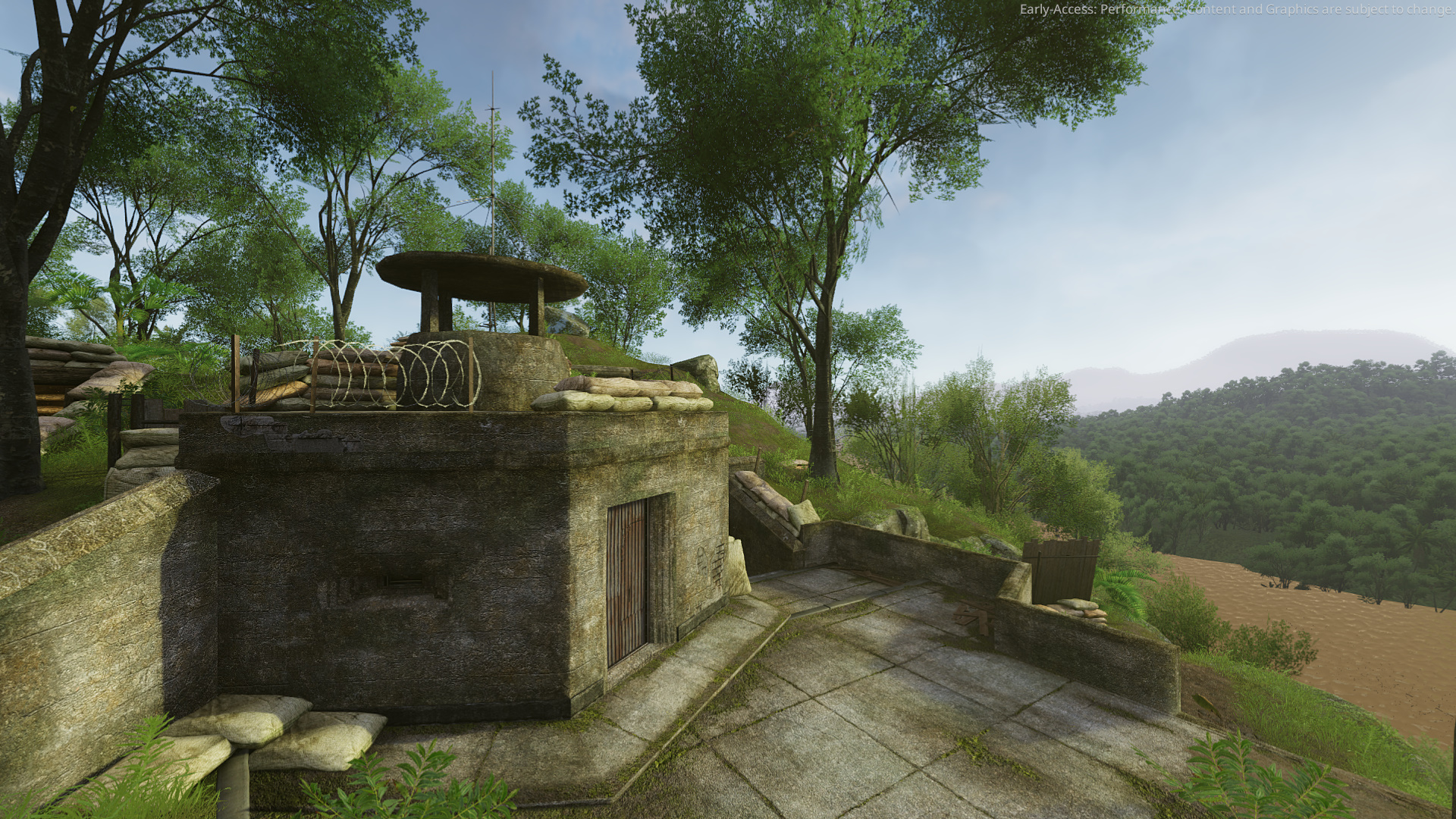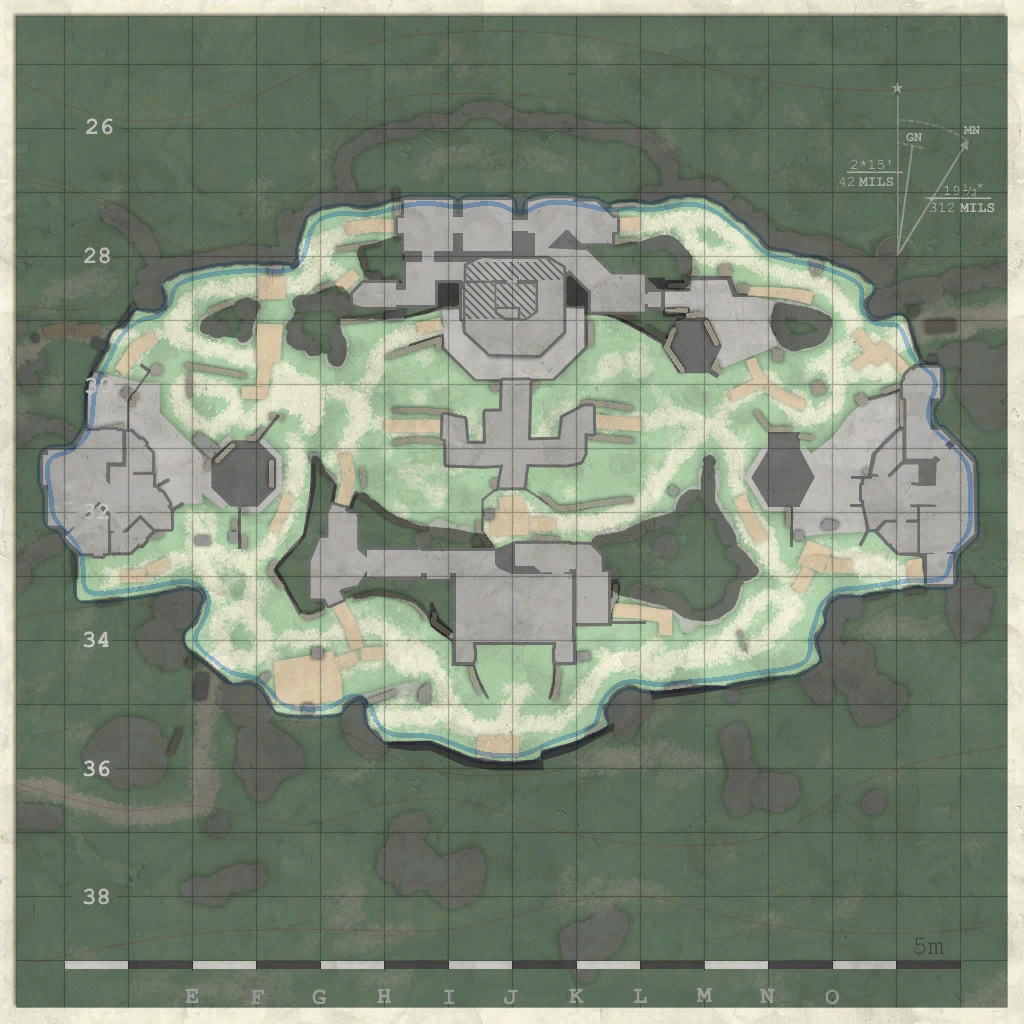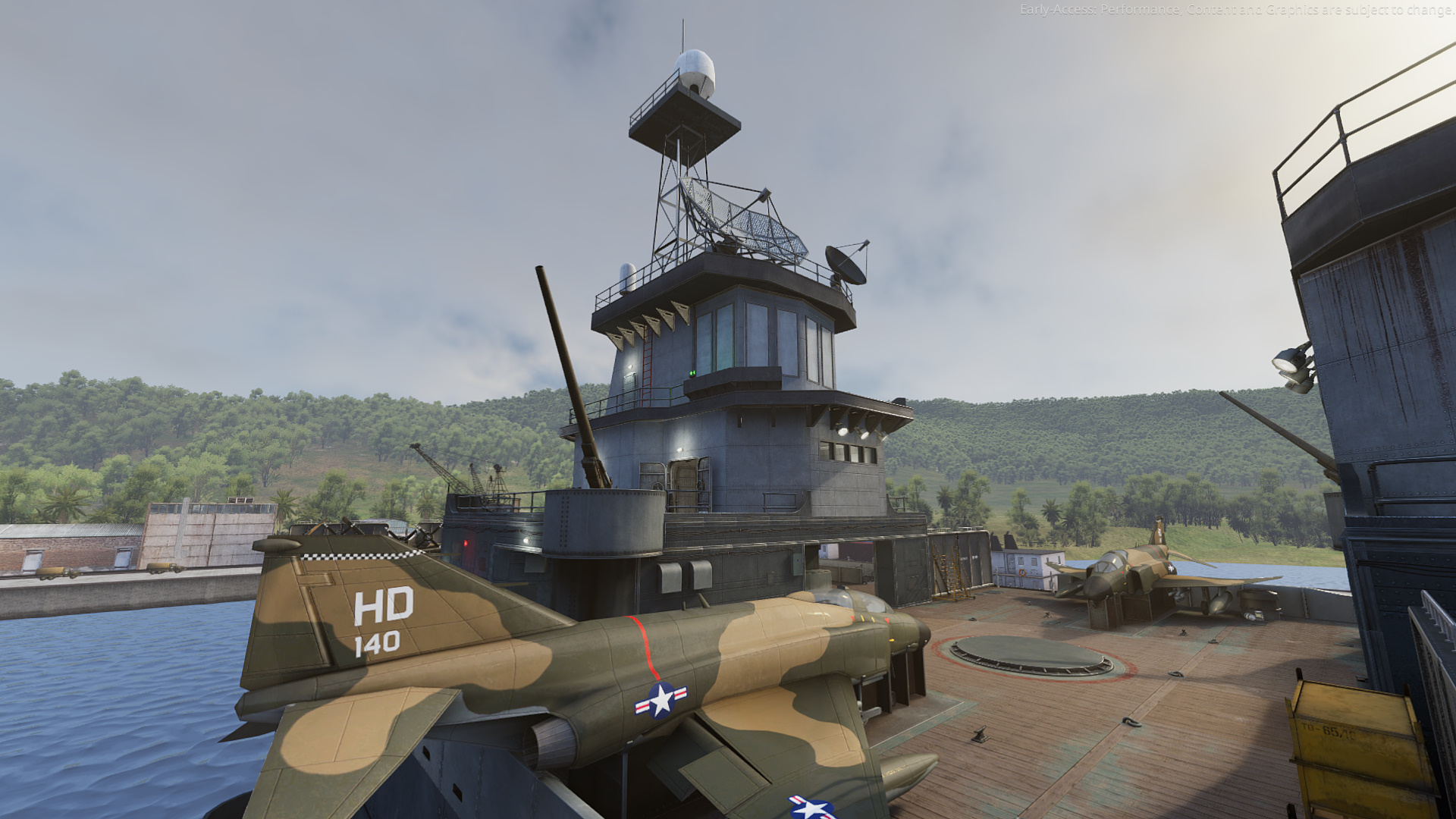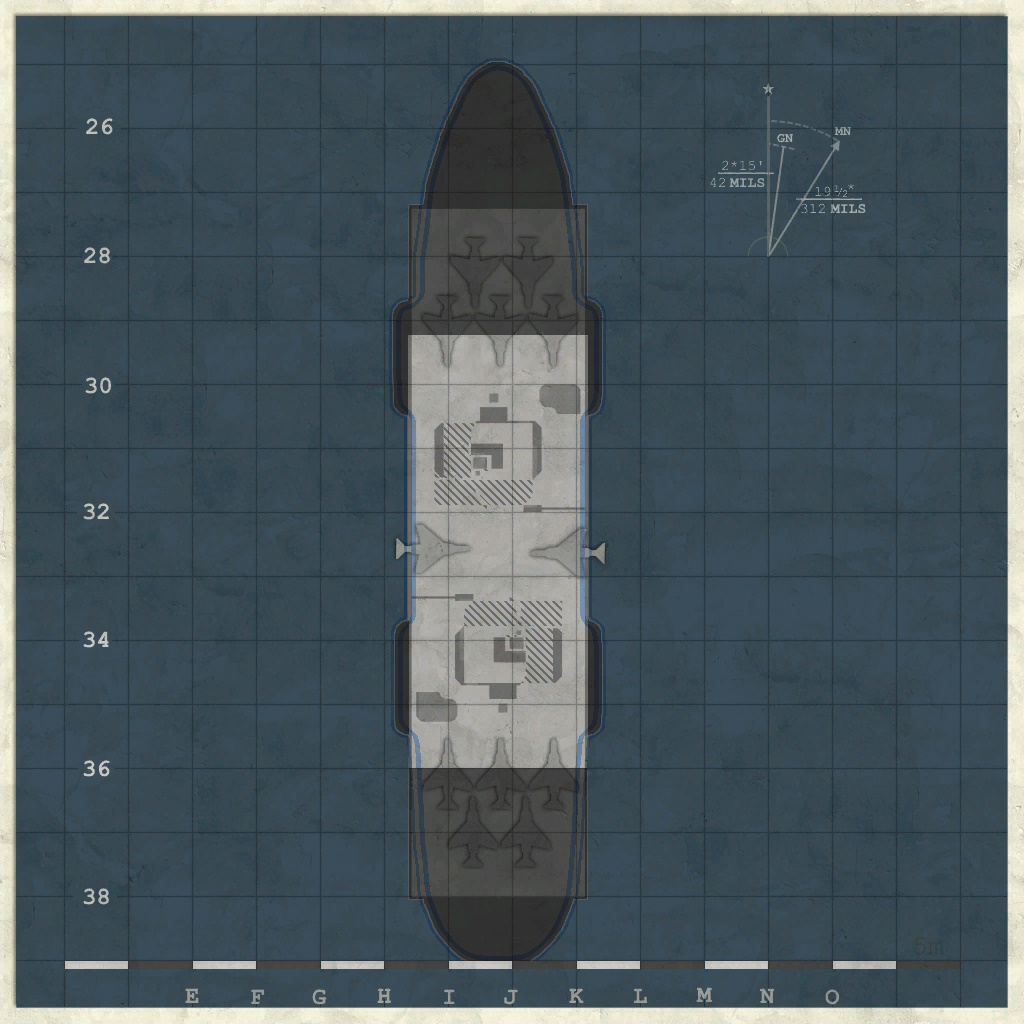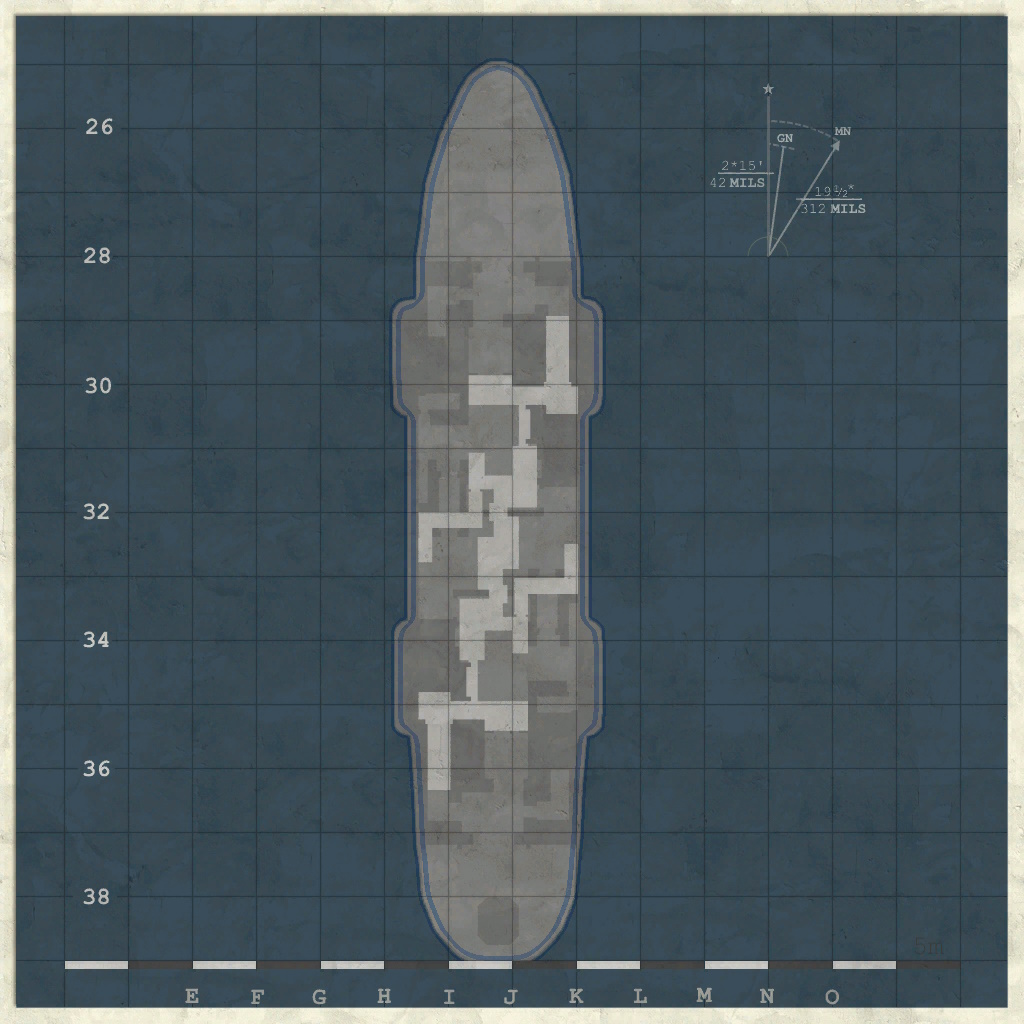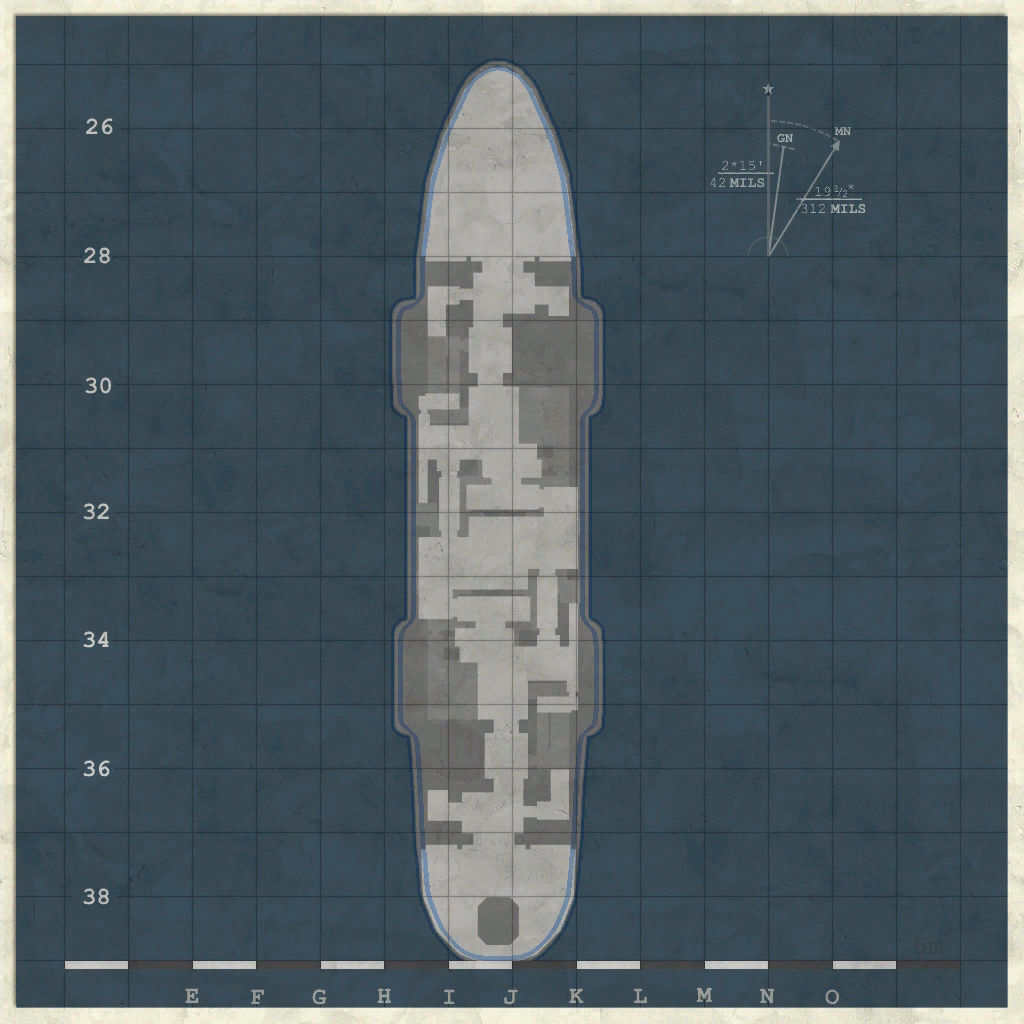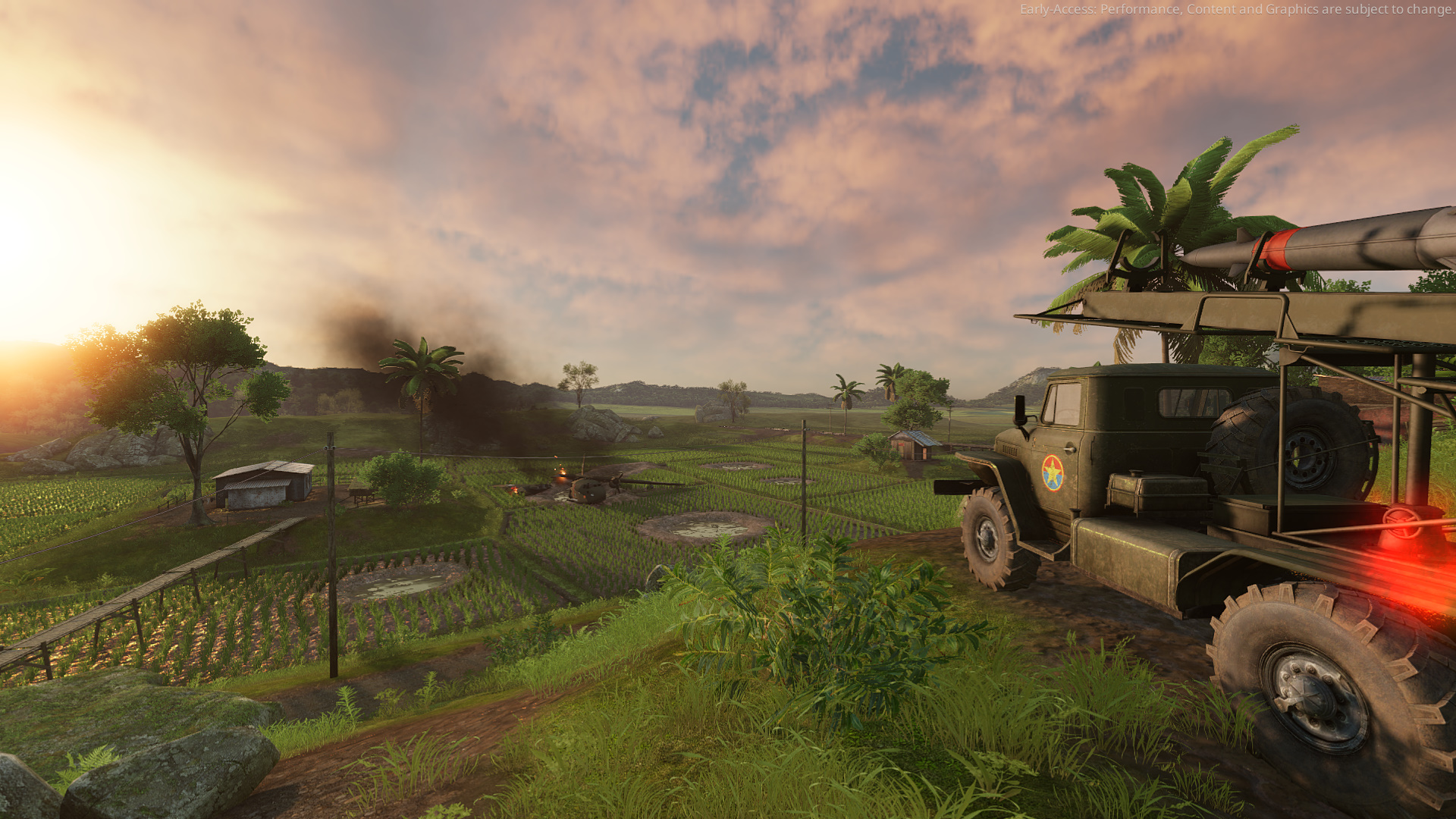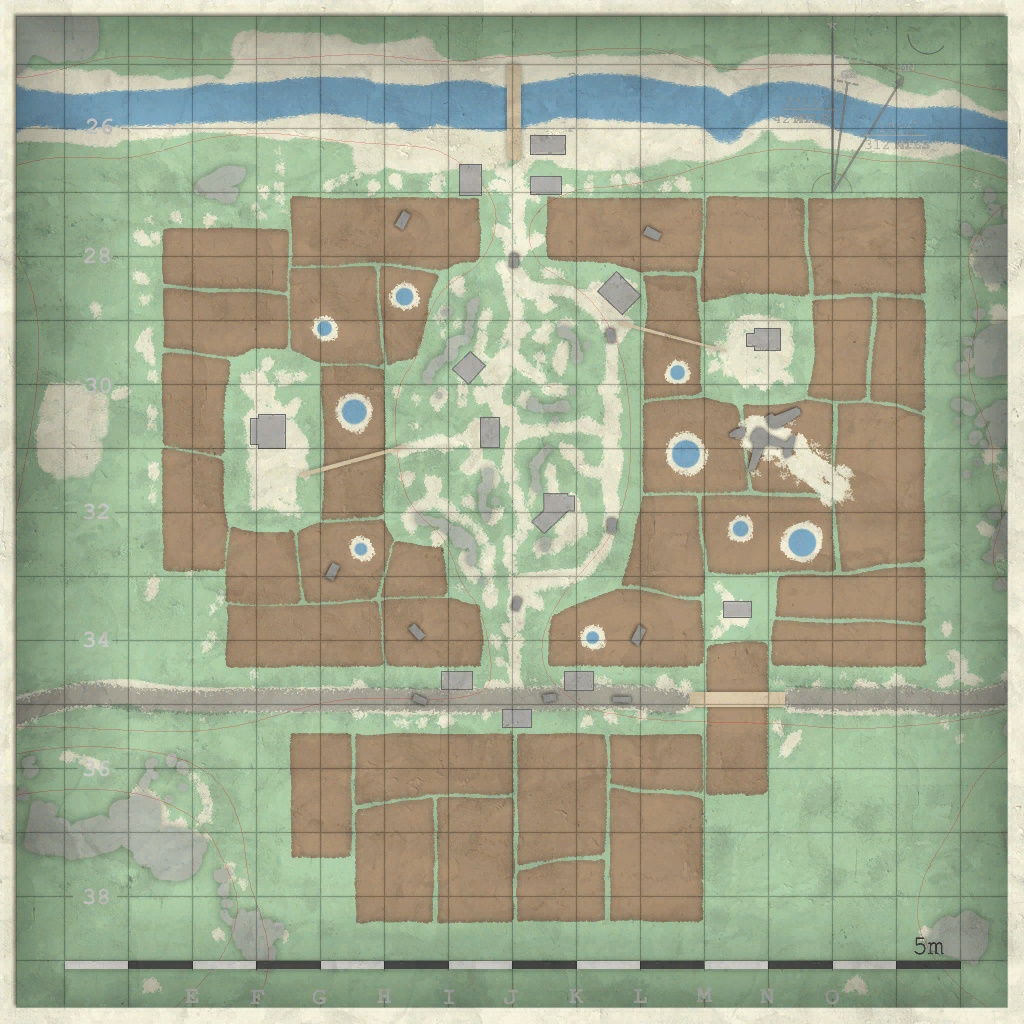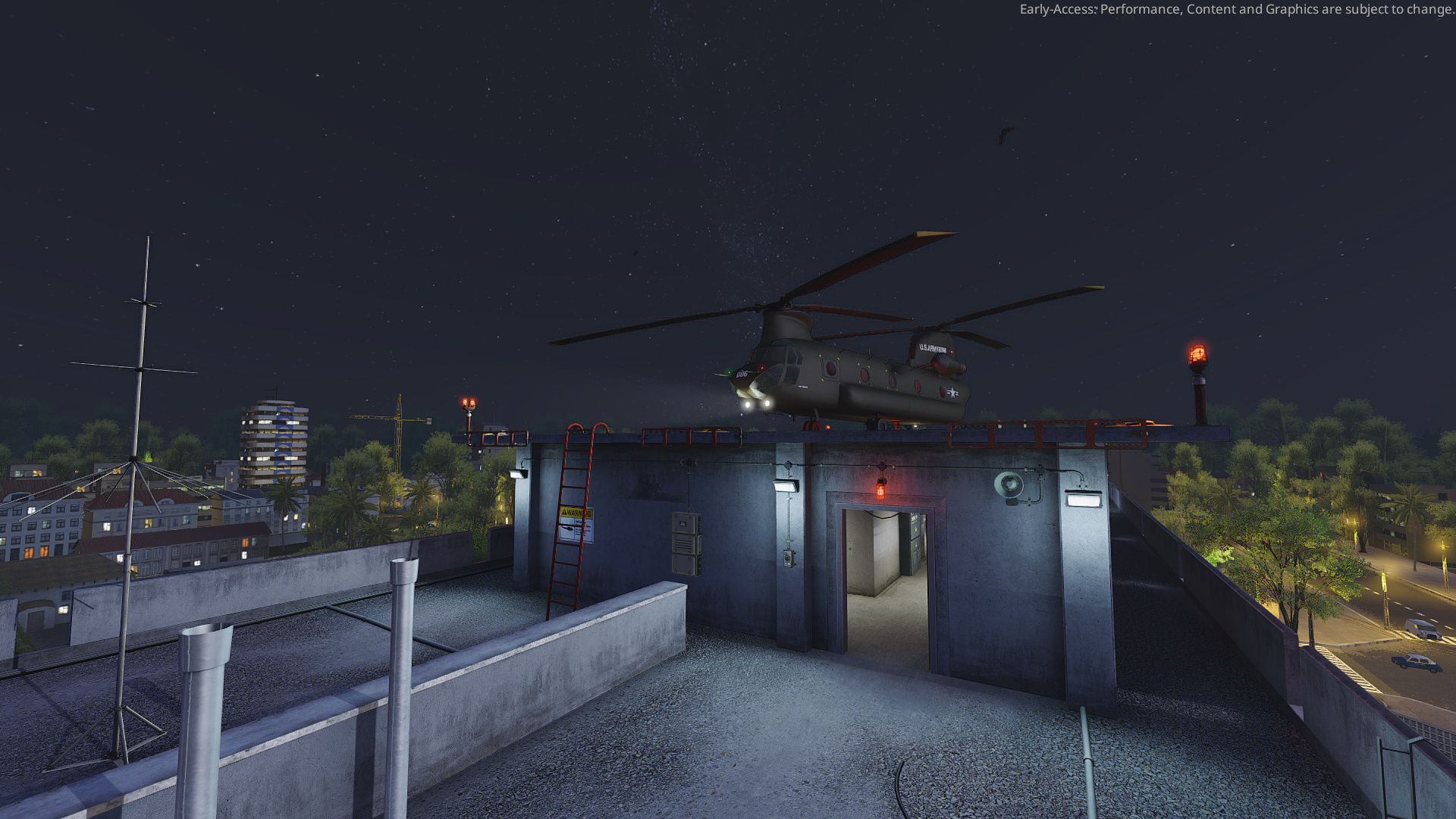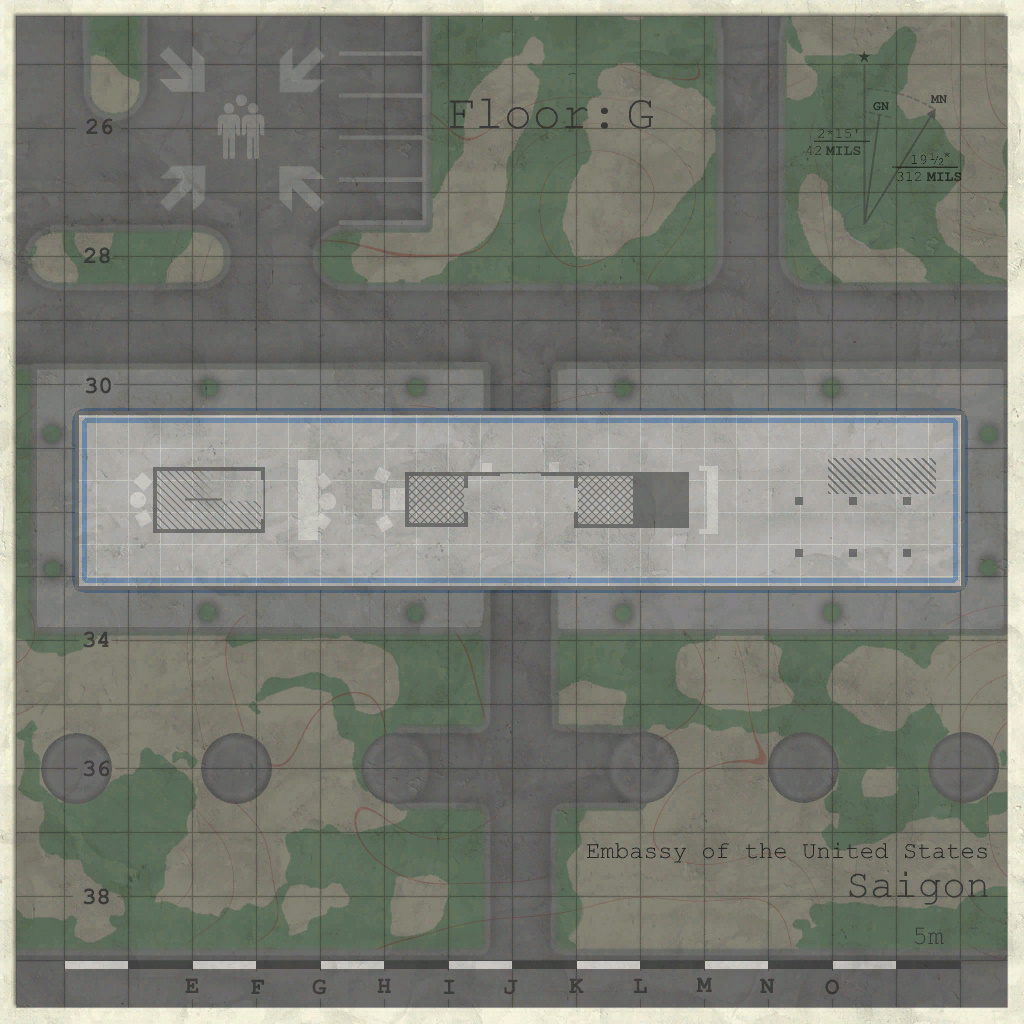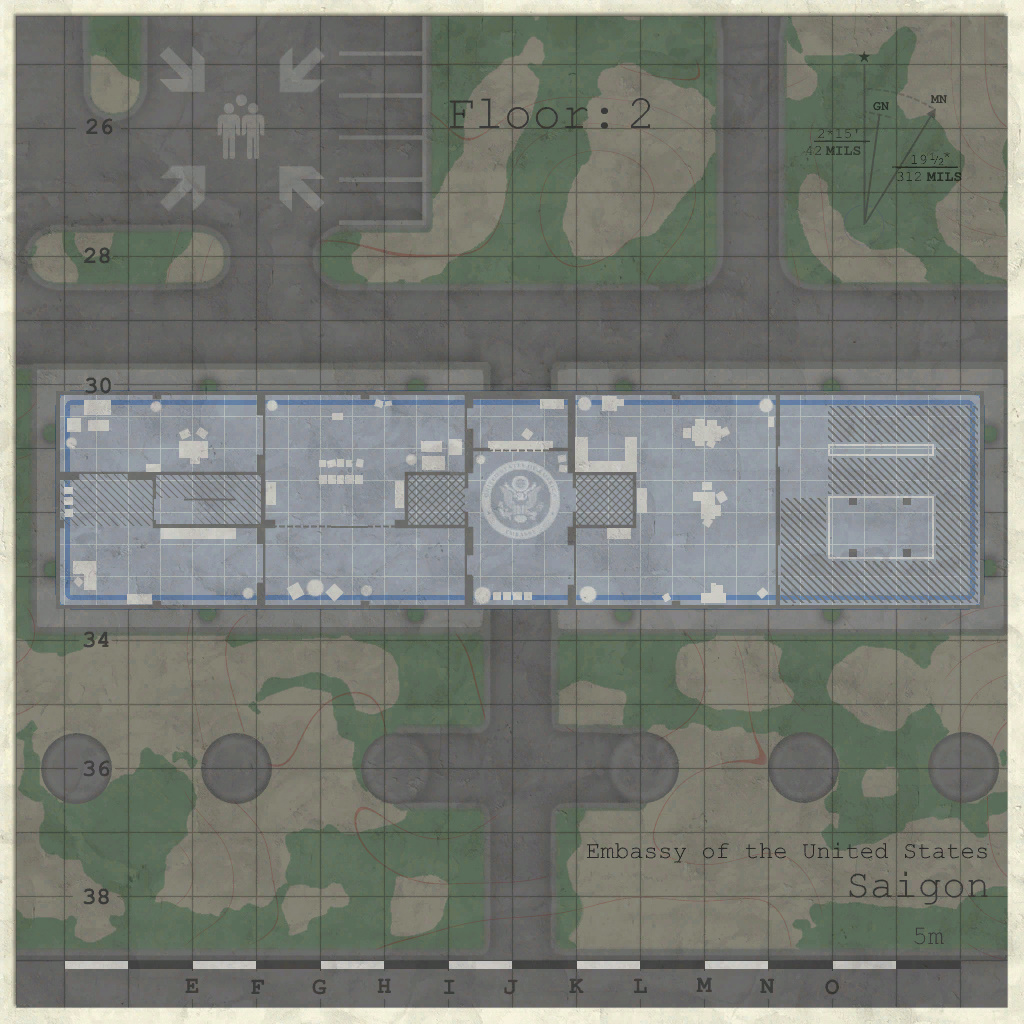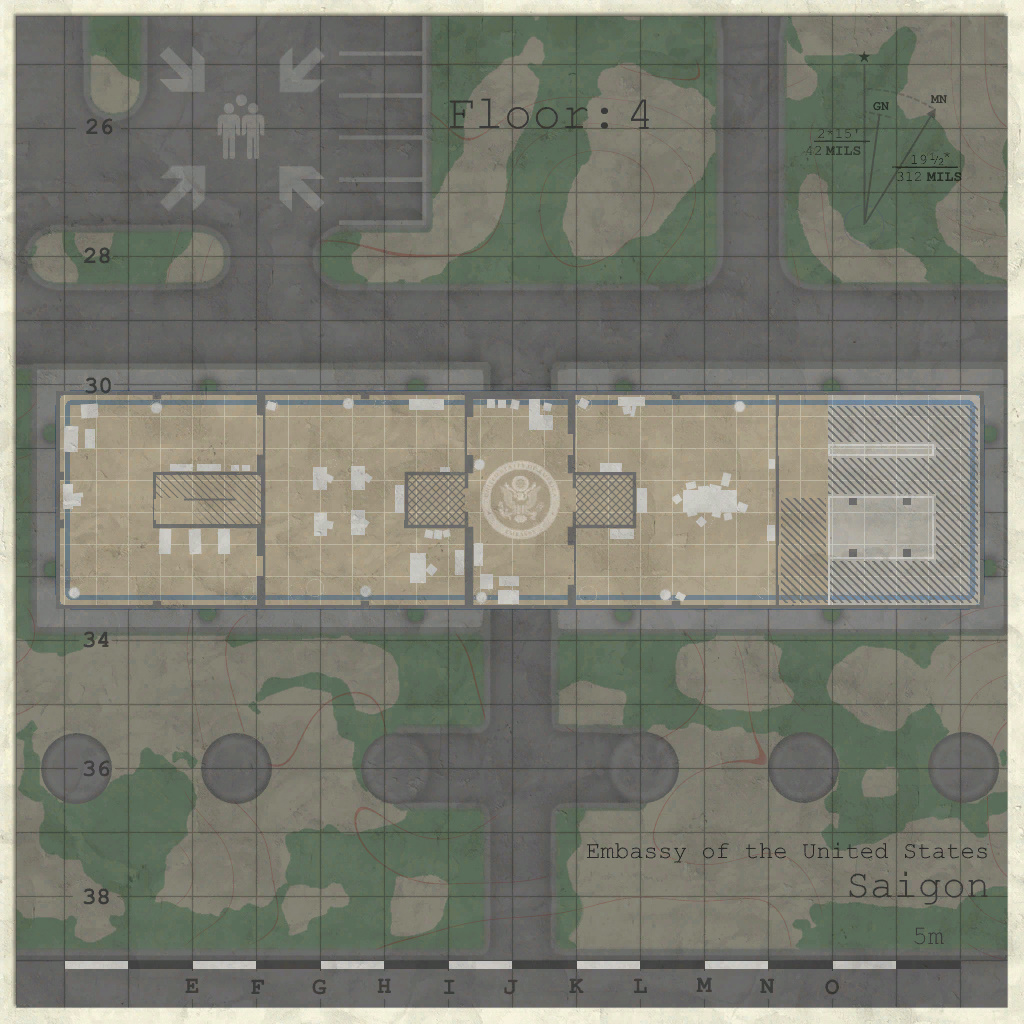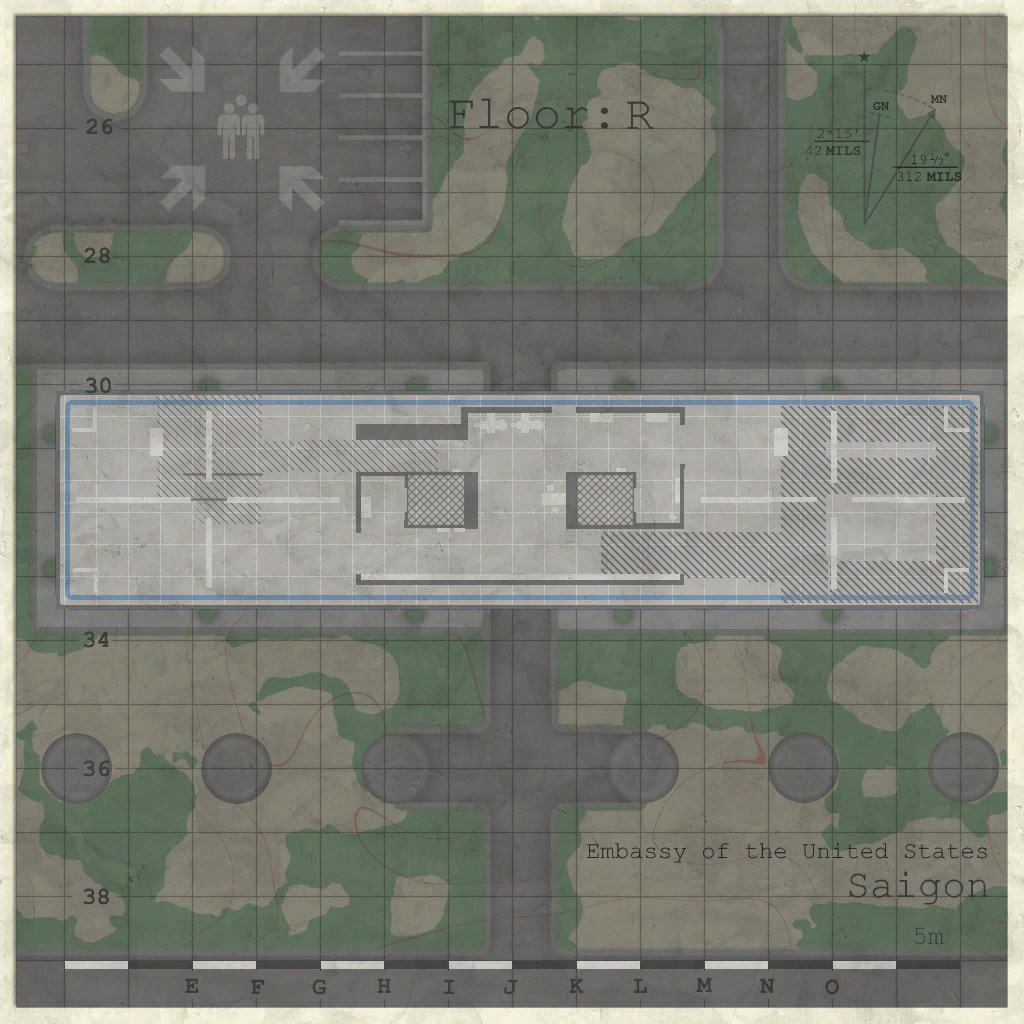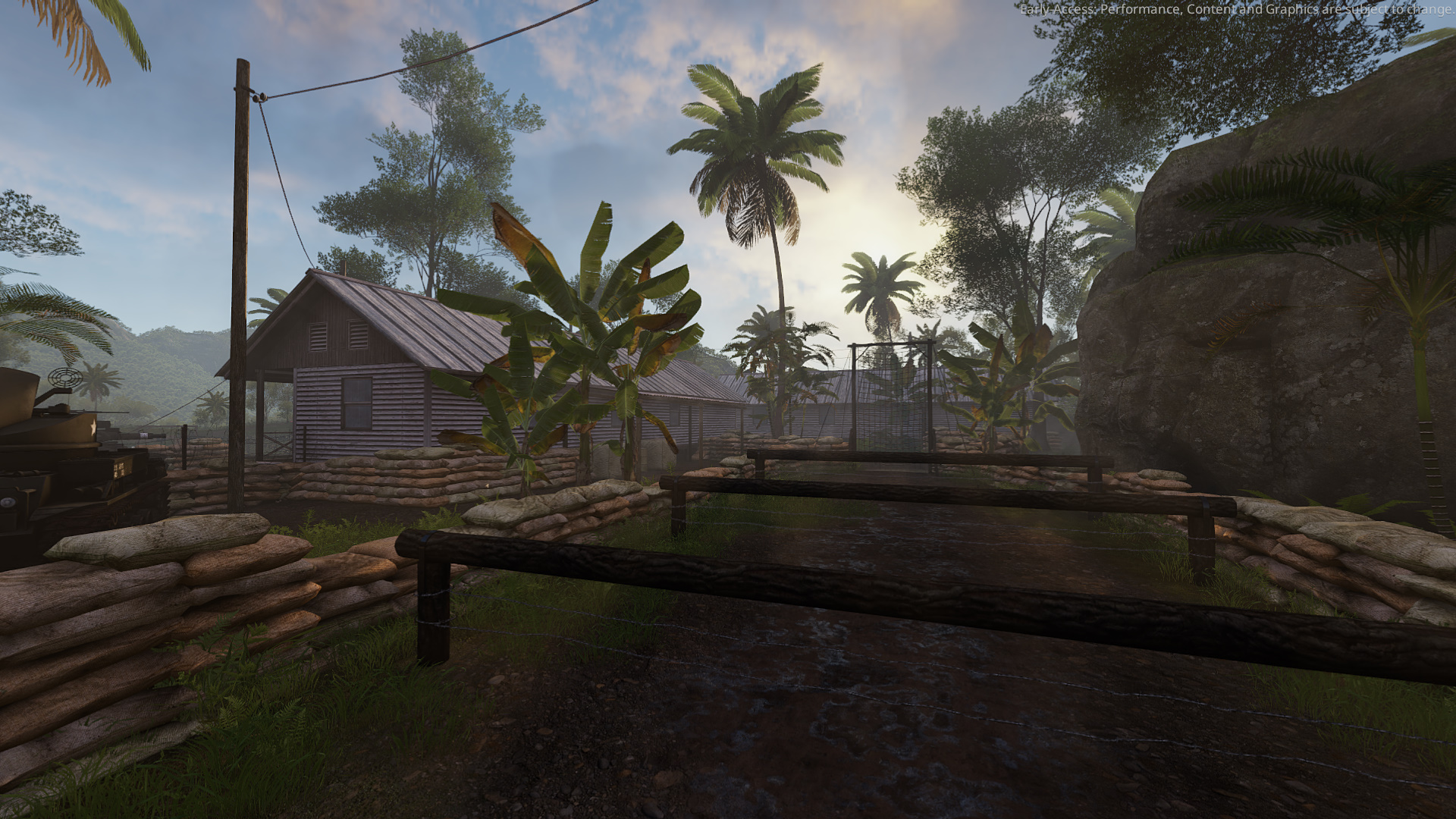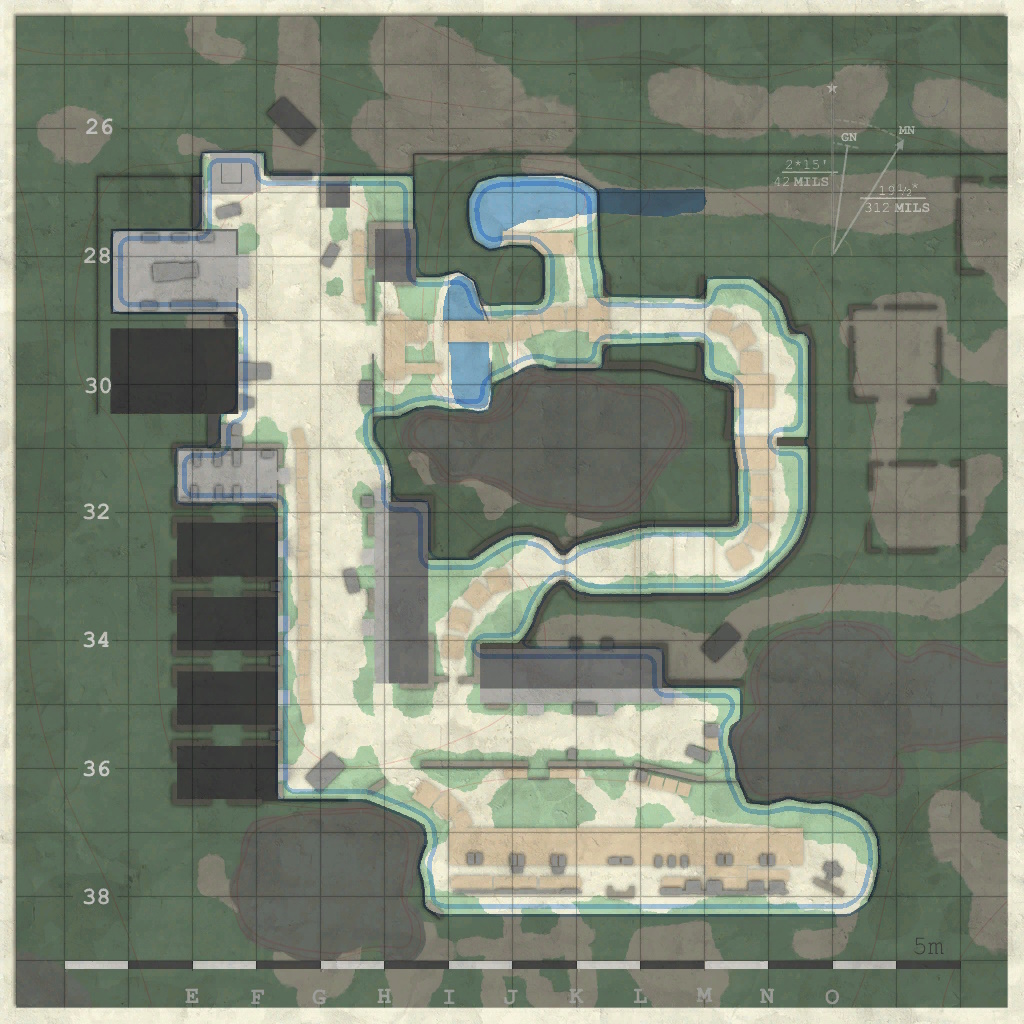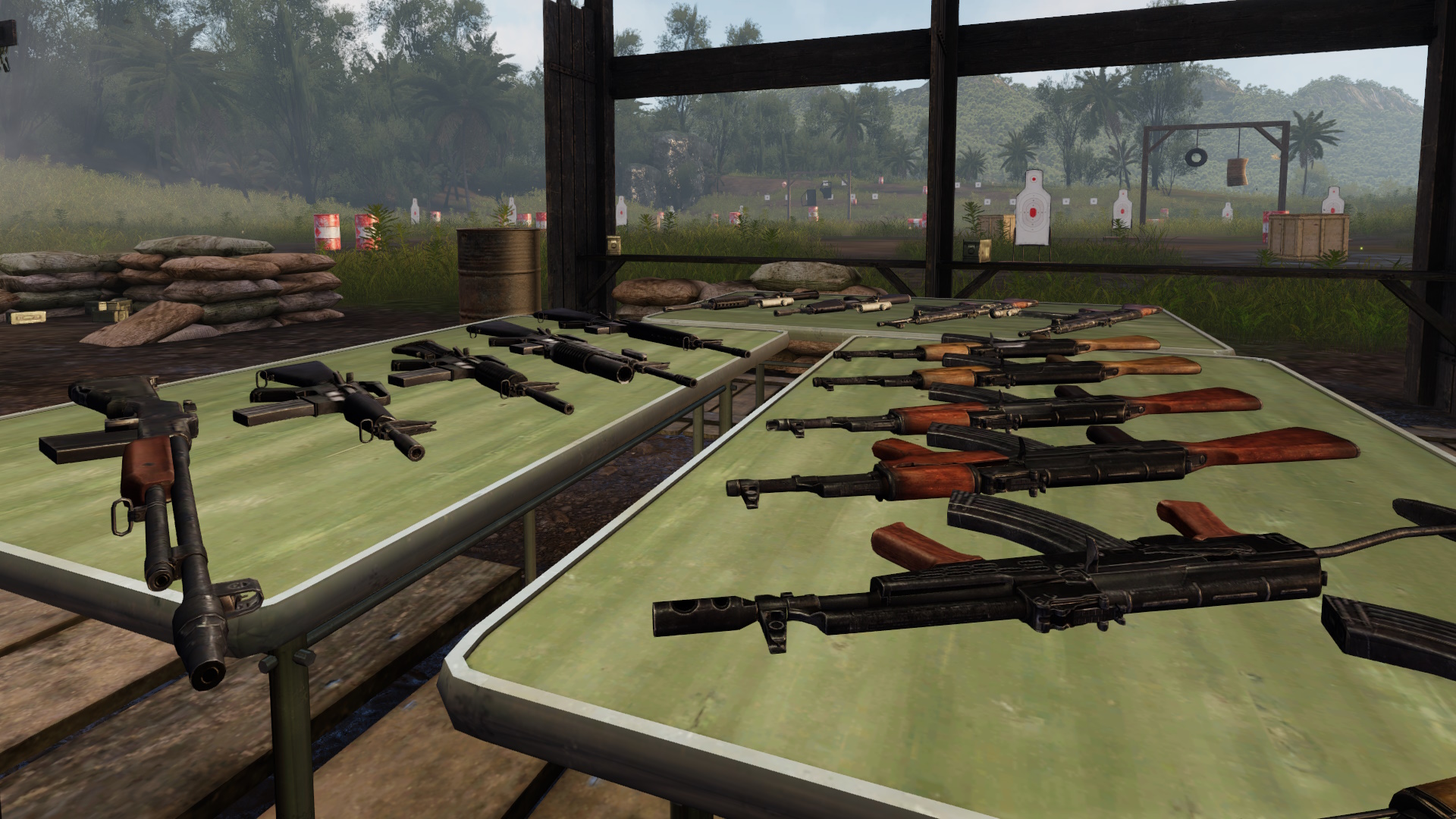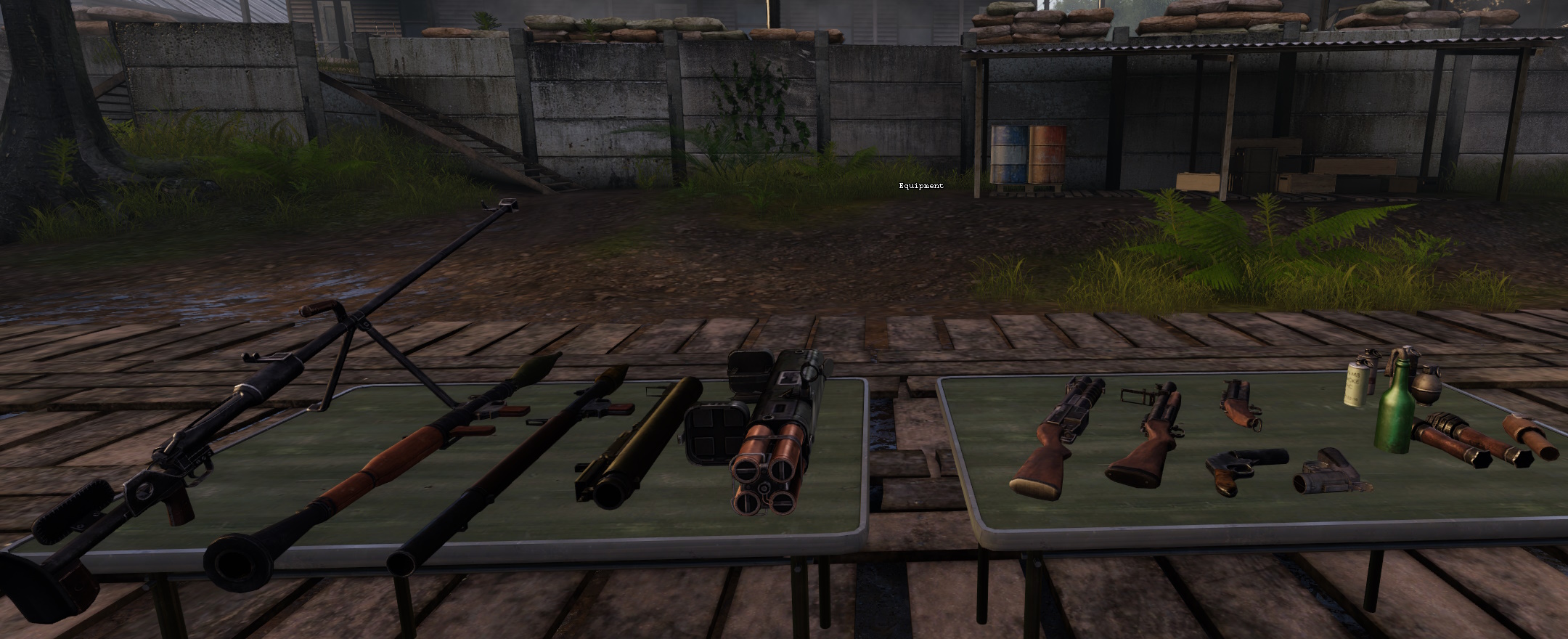Maps of Vietnam
There are currently 14 maps in the game with even more to come soon. All of the maps that come first are the Official Server map rotation. Here you can find some information such as supported gamemodes and map images.
Khe Sanh Depot
From January 21 to July 9, 1968 U.S. forces were defending the Khe Sanh Combat Base against the North Vietnamese People's Army. The battle was proclaimed a victory by the United States, although the combat base was abandoned after the battle. In this respect, Khe Sanh was a tactical US victory but a strategic defeat.
Internal name: mcv_depot.bsp
Supported gamemodes: Capture The Flag, Conquest, Deathmatch, Gungame, Gungame Deathmatch, Team Deathmatch
The Battle of Khe Sanh (21 January – 9 July 1968) was conducted in the Khe Sanh area of northwestern Quảng Trị Province, Republic of Vietnam (South Vietnam), during the Vietnam War. The main US forces defending Khe Sanh Combat Base (KSCB) were two regiments of the United States Marine Corps supported by elements from the United States Army and the United States Air Force (USAF), as well as a small number of Army of the Republic of Vietnam (ARVN) troops. These were pitted against two to three divisional-size elements of the North Vietnamese People's Army of Vietnam (PAVN).
The US command in Saigon initially believed that combat operations around KSCB during 1967 were part of a series of minor PAVN offensives in the border regions. That appraisal was later altered when the PAVN was found to be moving major forces into the area. In response, US forces were built up before the PAVN isolated the Marine base. Once the base came under siege, a series of actions were fought over a period of five months. During this time, KSCB and the hilltop outposts around it were subjected to constant PAVN artillery, mortar, and rocket attacks, and several infantry assaults. To support the Marine base, a massive aerial bombardment campaign (Operation Niagara) was launched by the USAF. In the first three months, over 114,810 tons of bombs were dropped by US aircraft and over 158,900 artillery rounds were fired in defense of the base; while U.S forces lost 1 KC-130, 3 C-123, 35 helicopter destroyed; 23 aircraft and 123 helicopter damaged[22] Throughout the campaign, US forces used the latest technology to locate PAVN forces for targeting. Additionally, the logistical effort required to support the base once it was isolated demanded the implementation of other tactical innovations to keep the Marines supplied.
In March 1968, an overland relief expedition (Operation Pegasus) was launched by a combined Marine–Army/ARVN task force that eventually broke through to the Marines at Khe Sanh. American commanders considered the defense of Khe Sanh a success, but shortly after the siege was lifted, the decision was made to dismantle the base rather than risk similar battles in the future. On 19 June 1968, the evacuation and destruction of KSCB began. Amid heavy shelling, the Marines attempted to salvage what they could before destroying what remained as they were evacuated. Minor attacks continued before the base was officially closed on 5 July. Marines remained around Hill 689, though, and fighting in the vicinity continued until 11 July until they were finally withdrawn, bringing the battle to a close.
In the aftermath, the North Vietnamese proclaimed a victory at Khe Sanh, while US forces claimed that they had withdrawn, as the base was no longer required. Historians have observed that the Battle of Khe Sanh may have distracted American and South Vietnamese attention from the buildup of Viet Cong (VC) forces in the south before the early 1968 Tet Offensive. Nevertheless, the US commander during the battle, General William Westmoreland, maintained that the true intention of Tet was to distract forces from Khe Sanh.
{#evt: service=youtube |id=https://www.youtube.com/watch?v=88XPMfJ1wfg |alignment=inline }}
{#evt: service=youtube |id=https://www.youtube.com/watch?v=GeG-NZog6xk |alignment=inline }}
NLF Outpost
Throughout the Vietnam War the United States Army has made use of long-range reconnaissance patrols (LRRP), well-trained and heavily armed reconnaissance teams. They would go on missions patrolling deep inside the enemy territory gathering intelligence on enemy positions and conducting counterinsurgency operations against the North Vietnamese Army and Việt Cộng.
Internal name: mcv_outpost.bsp
Supported gamemodes: Capture The Flag, Conquest, Deathmatch, Gungame, Gungame Deathmatch, Team Deathmatch
USMC Camp
The United States Marine Corps operated several artillery bases during the Vietnam War. Various camps were constructed along the demilitarized zone. The USMC remained highly mobile rather than remaining in their fixed positions as sitting targets. Many camps were inactivated and turned into Army of the Republic of Vietnam bases.
Internal name: mcv_camp.bsp
Supported gamemodes: Capture The Flag, Conquest, Deathmatch, Gungame, Gungame Deathmatch, Team Deathmatch
Battle of Saigon
During the early hours of 31 January 1968 the Việt Cộng launched several major attacks around Saigon in the first days of the Tet Offensive. The attacks were repulsed by ARVN and U.S. forces, with the Việt Cộng suffering heavy losses and causing substantial damage to the densely populated area of Cho Lon.
Internal name: mcv_saigon.bsp
Supported gamemodes: Capture The Flag, Conquest, Deathmatch, Gungame, Gungame Deathmatch, Team Deathmatch
Siege of Hue
On January 31 of 1968 Hue city was overrun by PAVN and Việt Cộng forces as part of a large scale operation known as the Tet Offensive. The city is located 50 miles from the demilitarized zone with an important supply line passing through called Highway 1, making it a strategically important city for both sides. Hue was later recaptured by the United States Army and ARVN forces.
Internal name: mcv_siege.bsp
Supported gamemodes: Capture The Flag, Conquest, Deathmatch, Gungame, Gungame Deathmatch, Team Deathmatch
Port of Qui Nhon
At the beginning of the Vietnam War in 1965 the Port of Qui Nhon, which was connected to railway, was upgraded with U.S. assistance to support military operations in the area. Throughout the war the North–South railway was a target of bombardments and sabotage by both North Vietnamese and Việt Cộng forces.
Internal name: mcv_port.bsp
Supported gamemodes: Capture The Flag, Conquest, Deathmatch, Gungame, Gungame Deathmatch, Team Deathmatch
3rd Field Hospital
The 3rd Field Hospital was located in Saigon and was probably the best military hospital in all of Vietnam. Injured or sick soldiers were very lucky to be treated there. The Việt Cộng did not attack hospitals during the Vietnam War, this is a staged event.
Internal name: mcv_hospital
Supported gamemodes: Capture The Flag, Conquest, Deathmatch, Gungame, Gungame Deathmatch, Team Deathmatch
Quang Tri Citadel
From January 30 to February 3, 1968, U.S. and South Vietnamese forces defended against the North Vietnamese People's Army and Viet Cong during the First Battle of Quang Tri. Despite fierce resistance, the city fell to the Viet Cong, signifying a strategic defeat in the region's stability amidst the broader Tet Offensive.
Internal name: mcv_citadel
Supported gamemodes: Capture The Flag, Conquest, Deathmatch, Gungame, Gungame Deathmatch, Team Deathmatch
Kham Duc Airbase
From May 10 to May 12, 1968, the Battle of Kham Duc was a critical moment in the Vietnam War. U.S. and South Vietnamese forces clashed with the North Vietnamese People's Army and Viet Cong, echoing the Tet Offensive. Despite strong defense near the Laos border, the Kham Duc Special Forces camp fell, underlining its role in the Tet Offensive's impact on the region.
Internal name: mcv_airbase.bsp
Supported gamemodes: Capture The Flag, Conquest, Deathmatch, Gungame, Gungame Deathmatch, Team Deathmatch
Can Tho Slums
From January 21 to July 9, 1968 U.S. forces were defending the Khe Sanh Combat Base against the North Vietnamese People's Army. The battle was proclaimed a victory by the United States, although the combat base was abandoned after the battle. In this respect, Khe Sanh was a tactical US victory but a strategic defeat.
Internal name: mcv_slums.bsp
Supported gamemodes: Capture The Flag, Conquest, Deathmatch, Gungame, Gungame Deathmatch, Team Deathmatch
Vong Canh Hill
During the Tet Offensive on January 31, 1968, Vong Canh Hill, strategically positioned near Hue city, was seized by PAVN and Viet Cong forces. Located 50 miles from the demilitarized zone and hosting the crucial Highway 1, the hill's capture disrupted the region's strategic balance. Subsequently, U.S. Army and ARVN forces recaptured Vong Canh Hill, underscoring its dynamic significance in the Vietnam War.
Internal name: mcv_bunkerhill.bsp
Supported gamemodes: Capture The Flag, Conquest, Deathmatch, Gungame, Gungame Deathmatch, Team Deathmatch
USNS Card
In the early hours of May 2, 1964, two Viet Cong commandos from the 65th Special Operations Group emerged from a sewer tunnel near the location where the USNS Card was anchored. Under the cover of darkness, they planted two explosive devices to the ship's hull, successfully detonating them causing the ship to sink.
Internal name: mcv_usns_card.bsp
Supported gamemodes: Capture The Flag, Conquest, Deathmatch, Gungame, Gungame Deathmatch, Team Deathmatch
Cao Lanh Rice Fields
During February 1966, the Cao Lanh Ricefield Battle occurred in South Vietnam's Mekong Delta. Fought between Viet Cong insurgents and the South Vietnamese Army, supported by American advisors, the engagement showcased the challenges of combat in the region's terrain. While inconclusive, the battle highlighted the complexities of counterinsurgency operations in the Mekong Delta during the Vietnam War.
Internal name: mcv_ricefield.bsp
Supported gamemodes: Capture The Flag, Conquest, Deathmatch, Gungame, Gungame Deathmatch, Team Deathmatch
Maps not in rotation/Misc Maps
Maps that are not in rotation are still in the game files and playable just not selectable in singleplayer or in the official server map pool. To play on these maps just open the game console and enter (no quotes "")
"map mcv_embassy"
Once you are in the map you can change the gamemode via the Vote Menu or specific settings through console commands (Like you change how many kills it takes in Team DeathMatch by setting the "mp_fraglimit")
[EXAMPLE:"mp_fraglimit 100"]
U.S. Embassy
At the beginning of the Tet Offensive on the morning of January 31, 1968, 19 Việt Cộng sappers entered the embassy grounds through a hole in the wall and occupied the area for six hours. Two military police officers and a USMC soldier were killed during the fighting. Soldiers of the 101st U.S. Airborne Division conquered the area at noon and killed all Vietnamese invaders.
Internal name: mcv_embassy.bsp
Supported gamemodes: Conquest, Deathmatch, Gungame, Gungame Deathmatch, Team Deathmatch
Training Camp
Located in the heart of the jungle and close to the demilitarized zone, this training camp provides all the necessary training to prepare United States Army soldiers for the war in Vietnam.
Internal name: mcv_training.bsp
Supported gamemodes: Training
| Factions | Classes | ||||||
|---|---|---|---|---|---|---|---|
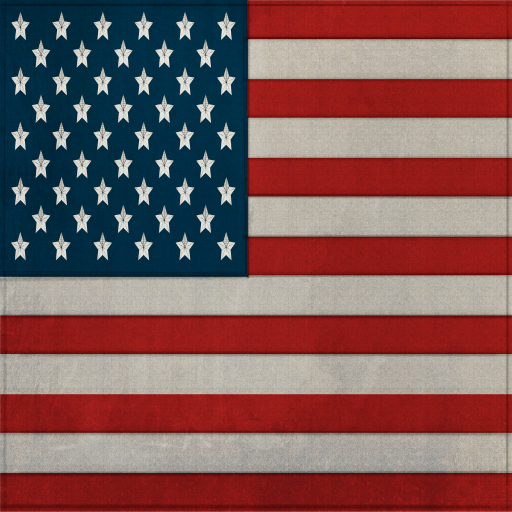 U.S. Army |
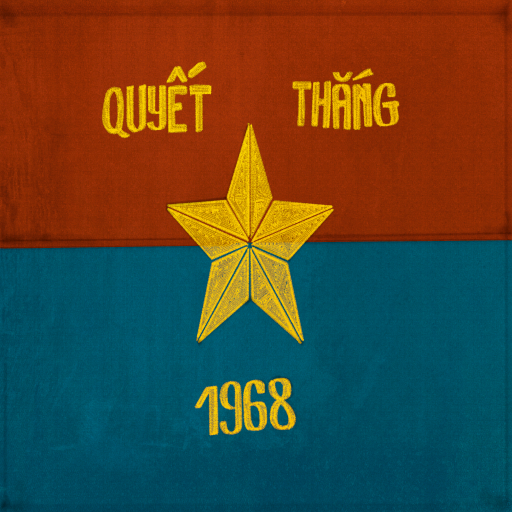 Việt Cộng |
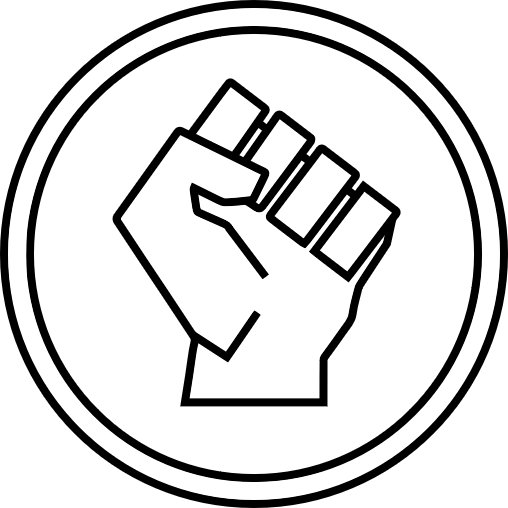 Assault |
 Medic |
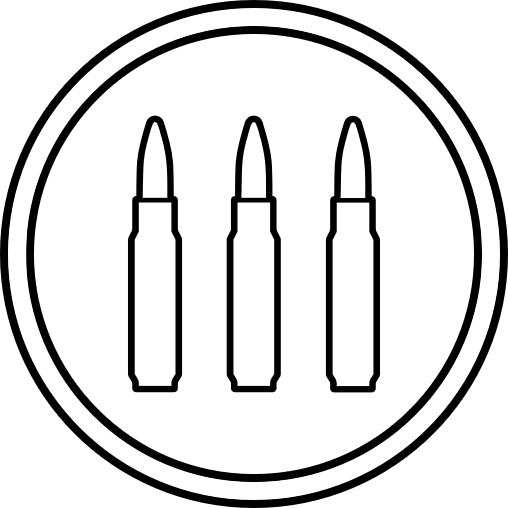 Gunner |
 Engineer |
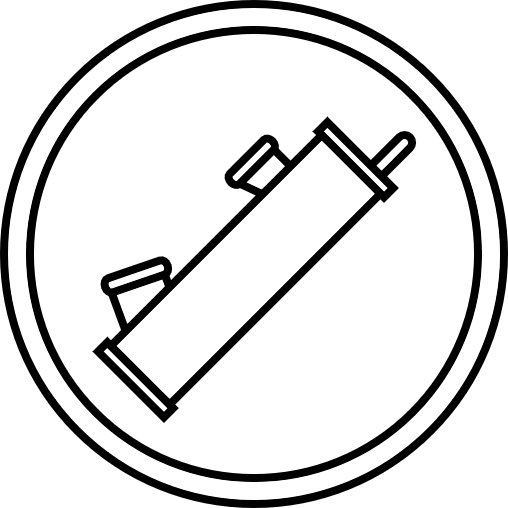 Radioman |
 Sniper |
| General | |||||
|---|---|---|---|---|---|
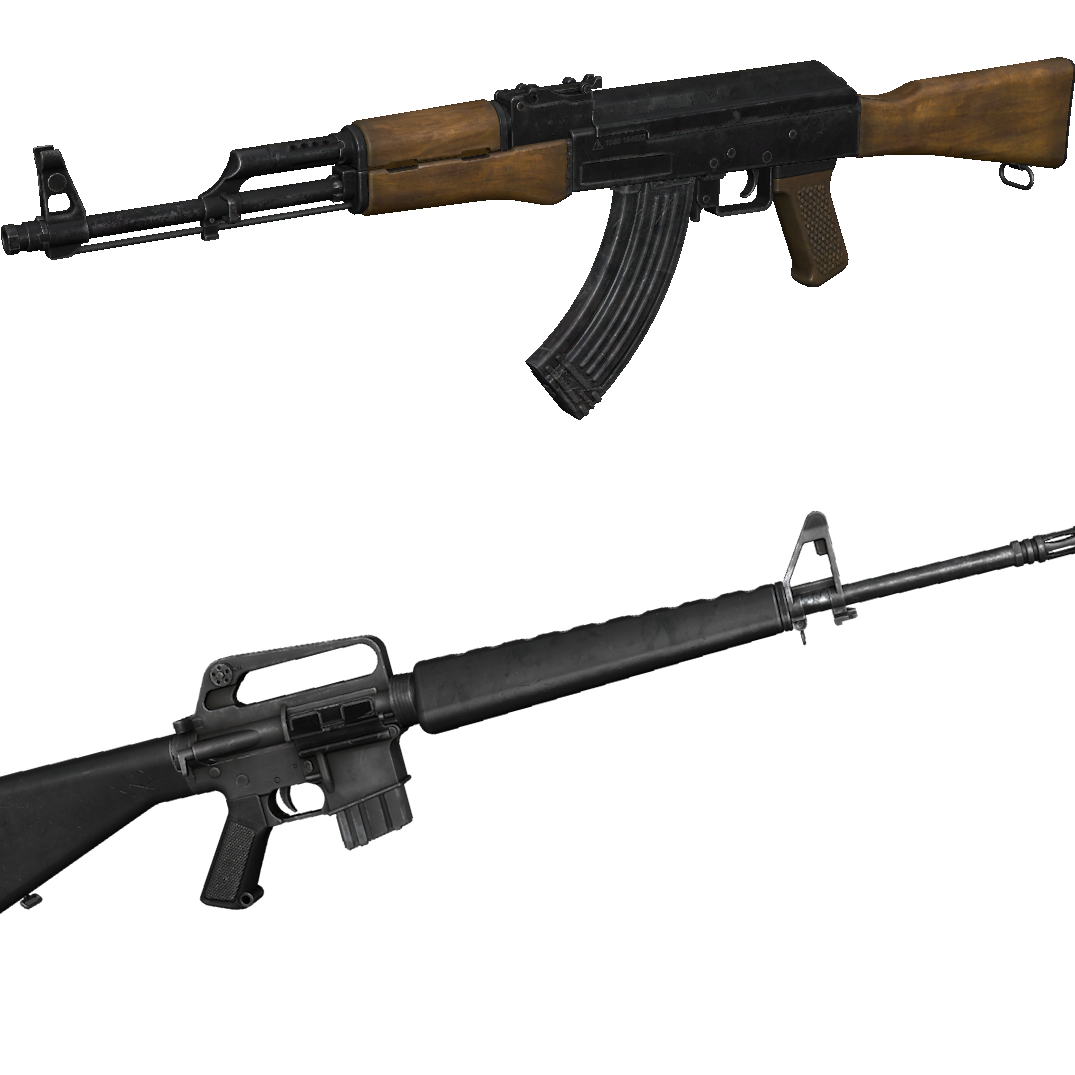 Weapons |
Maps |
Gamemodes |
Mechanics |
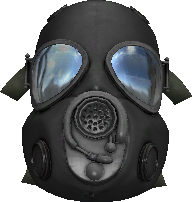 Equipment |
Awards |
